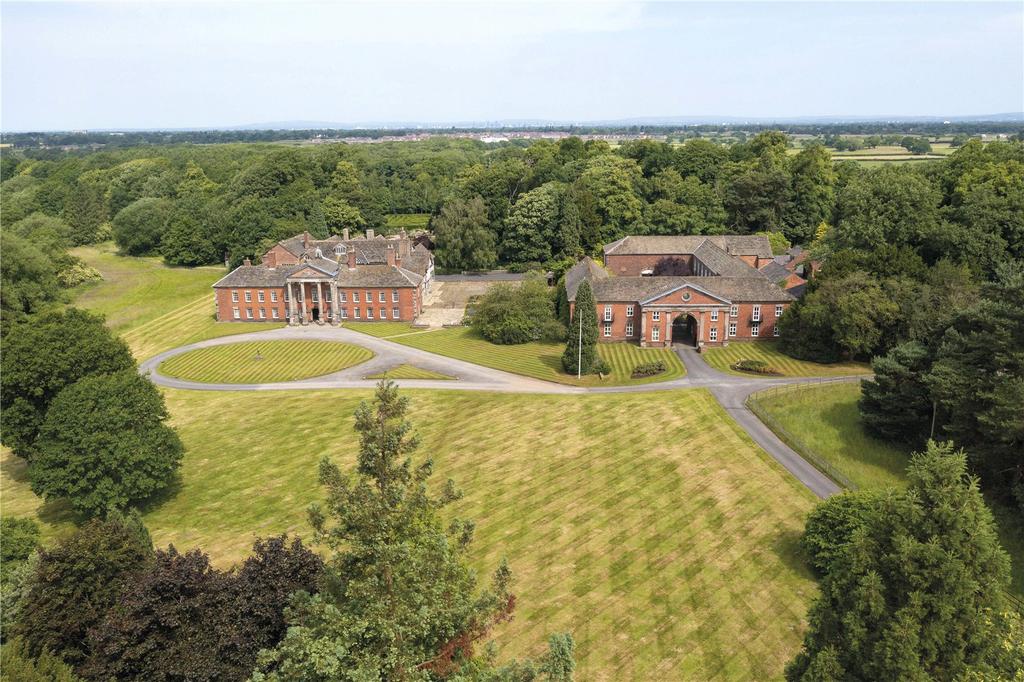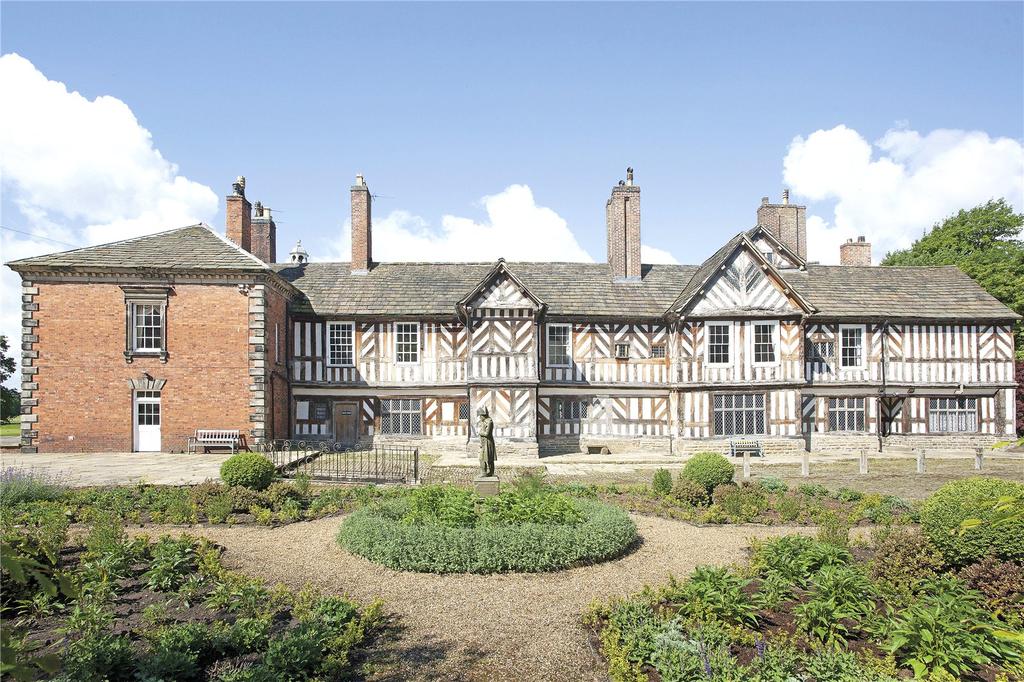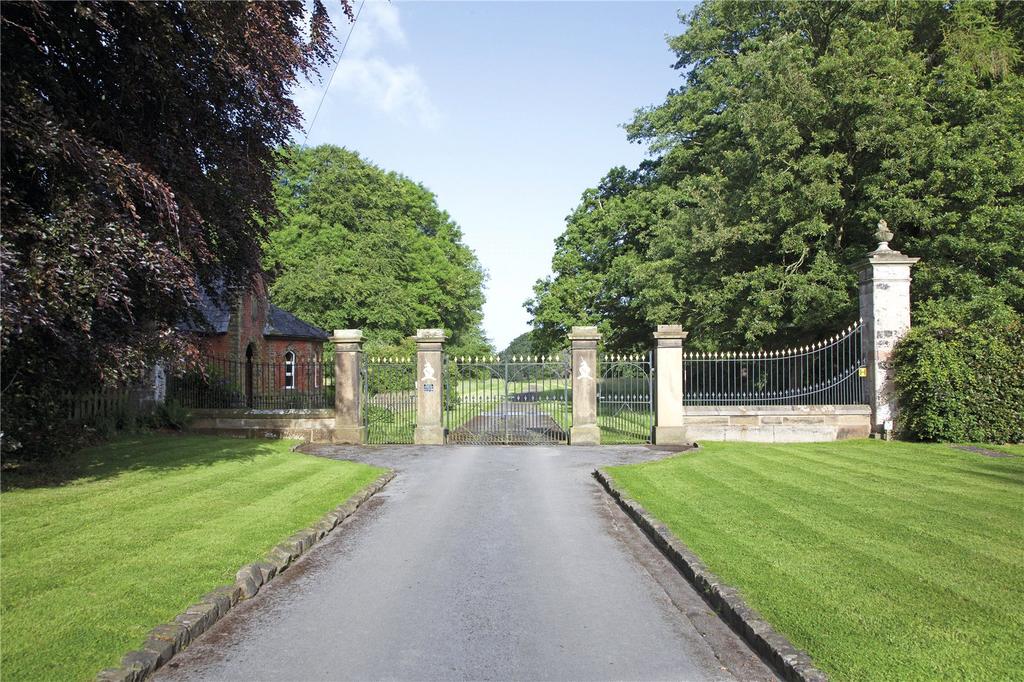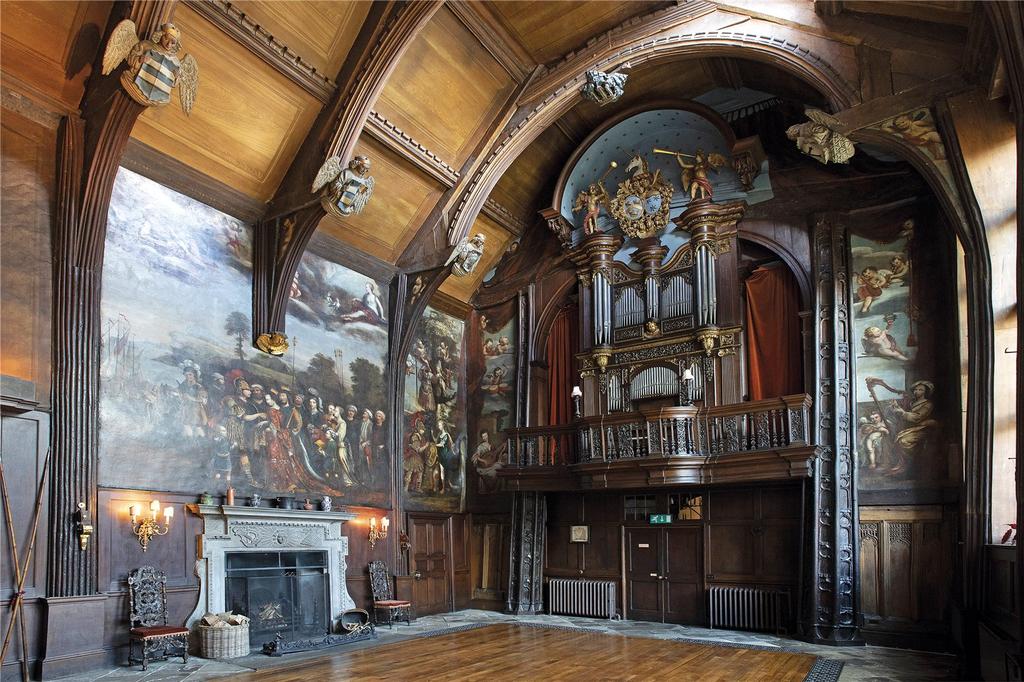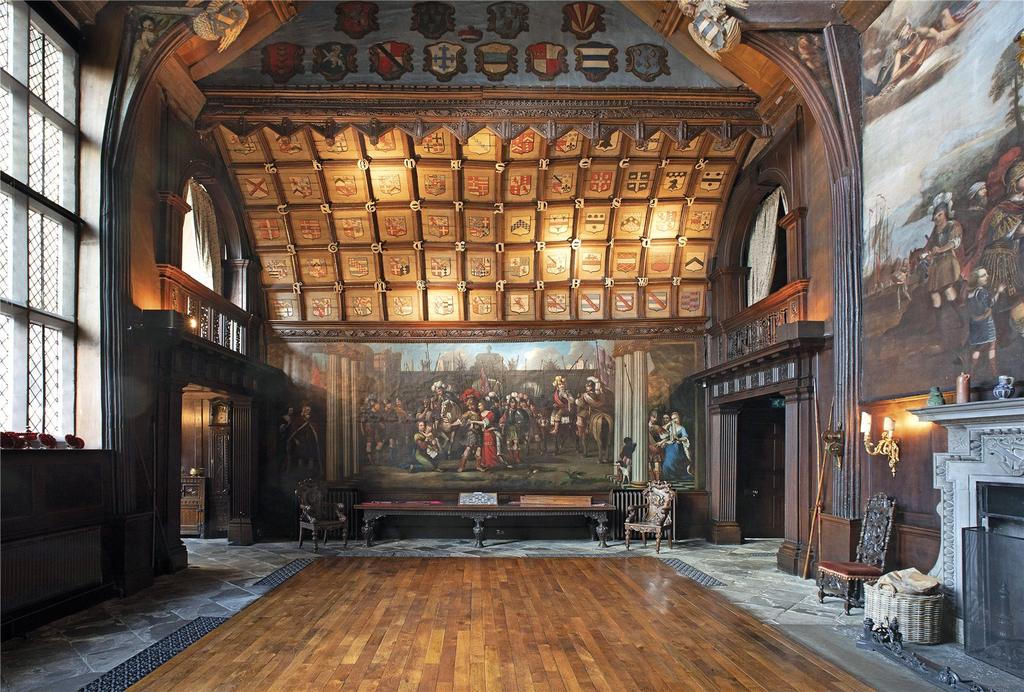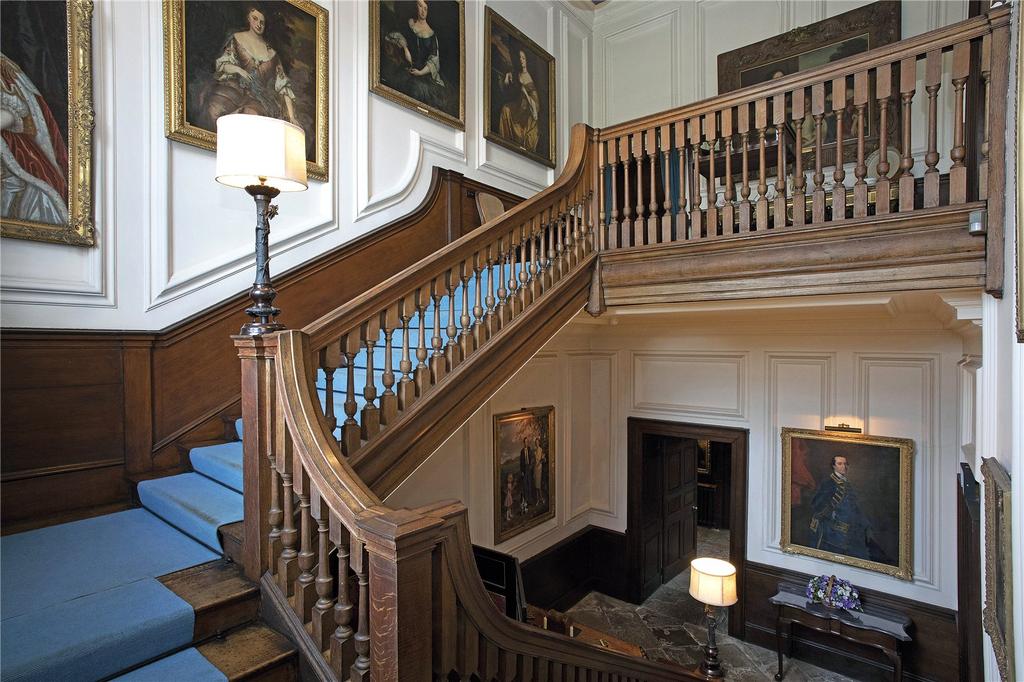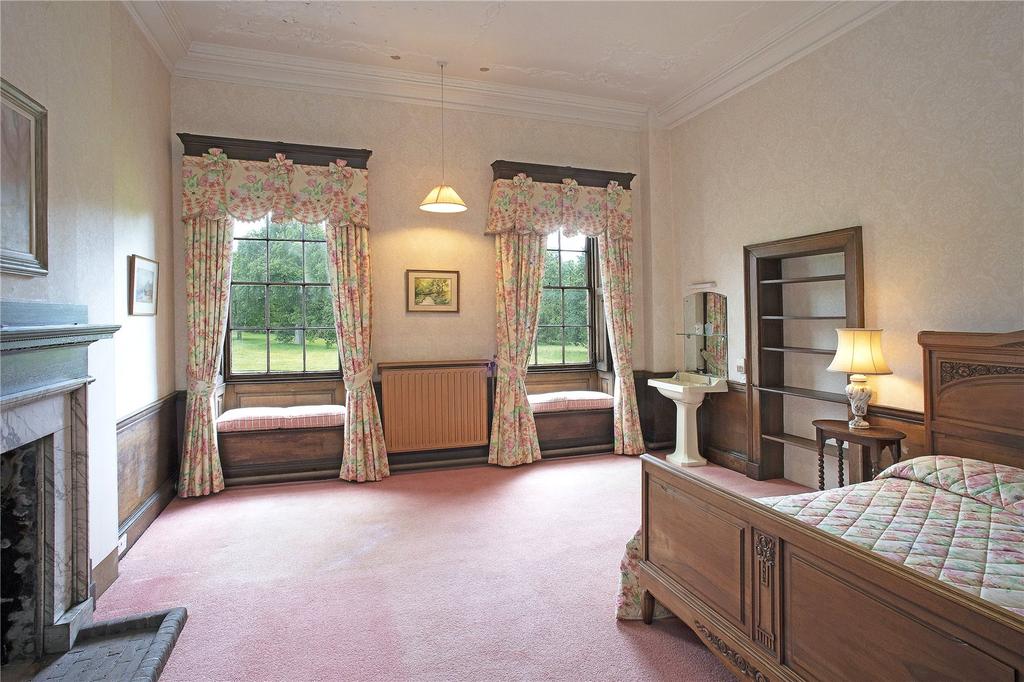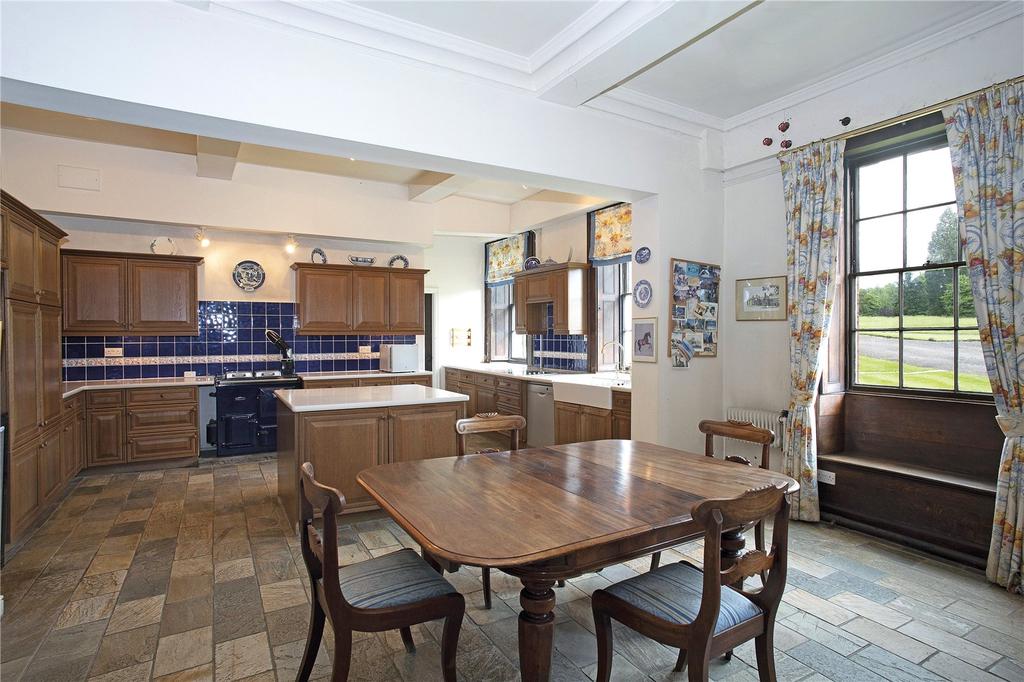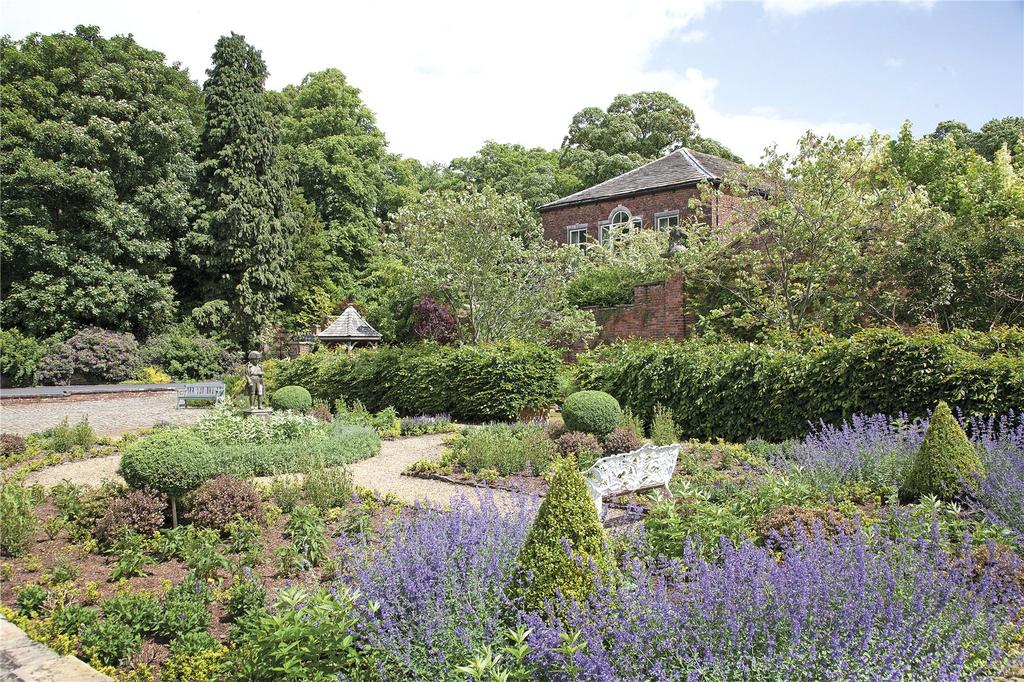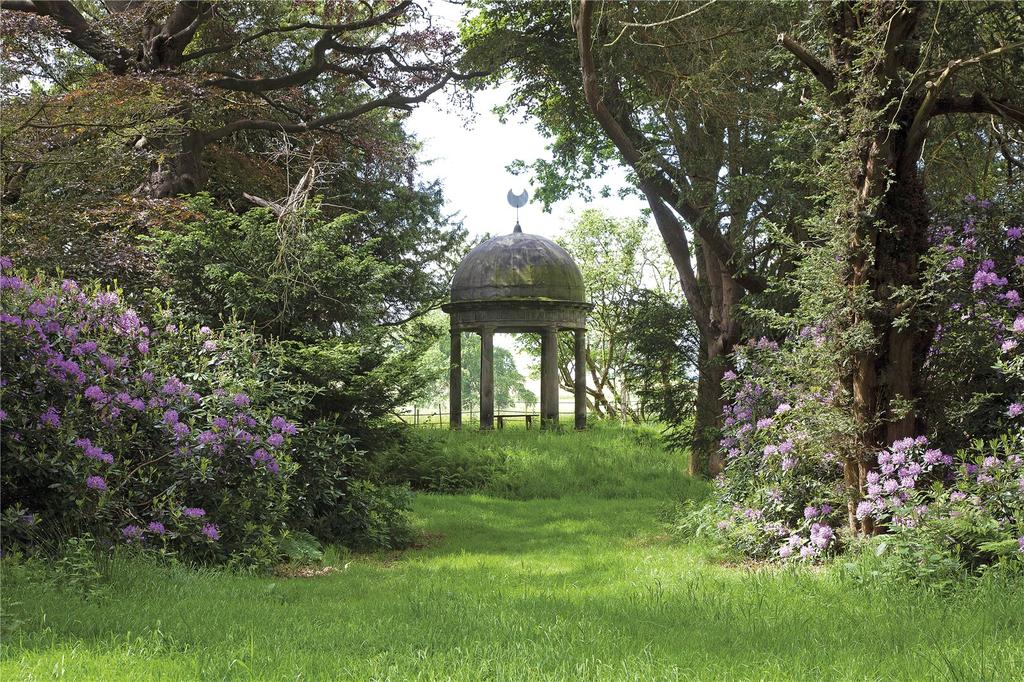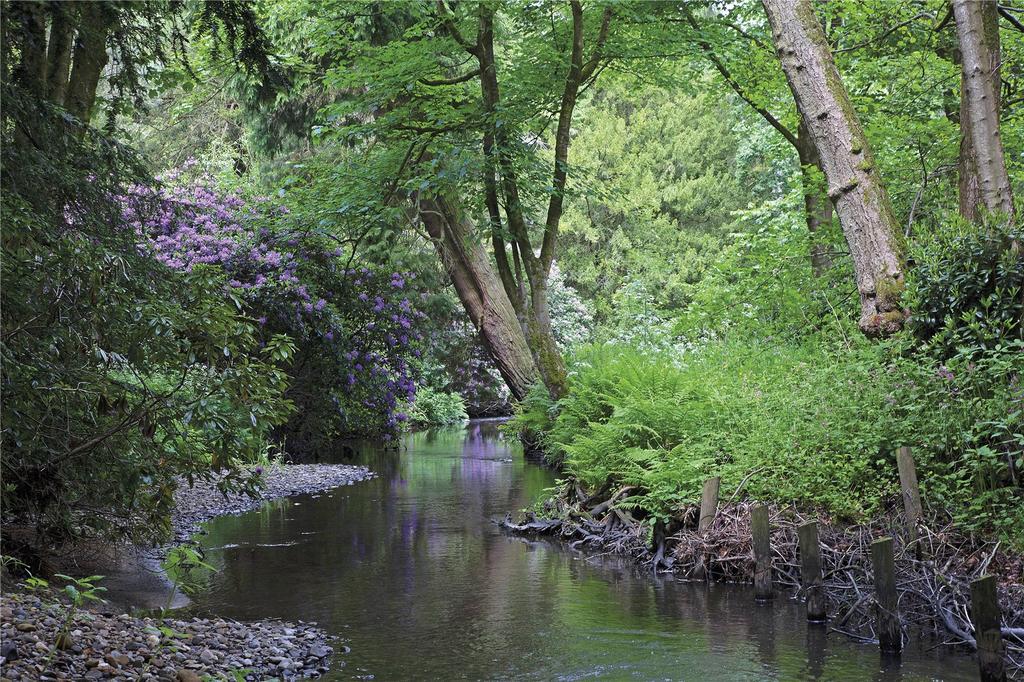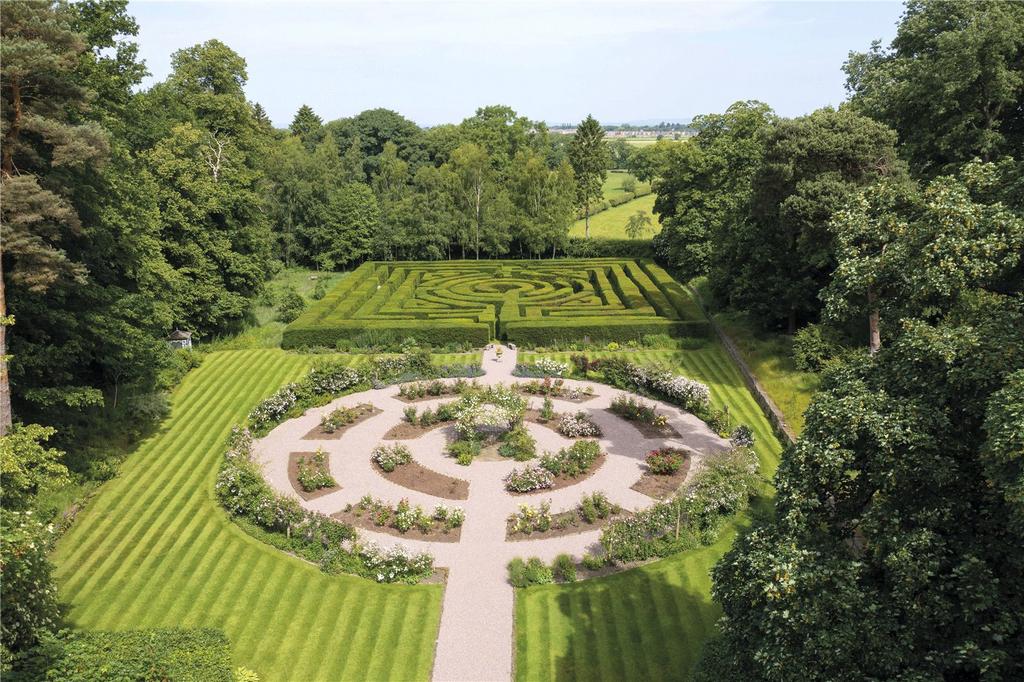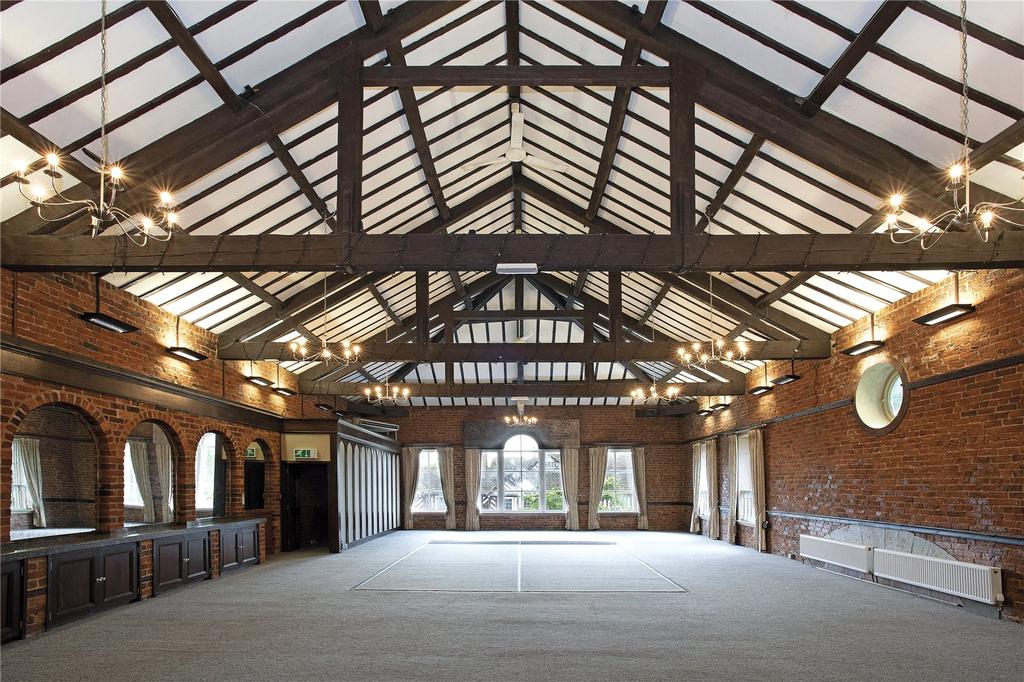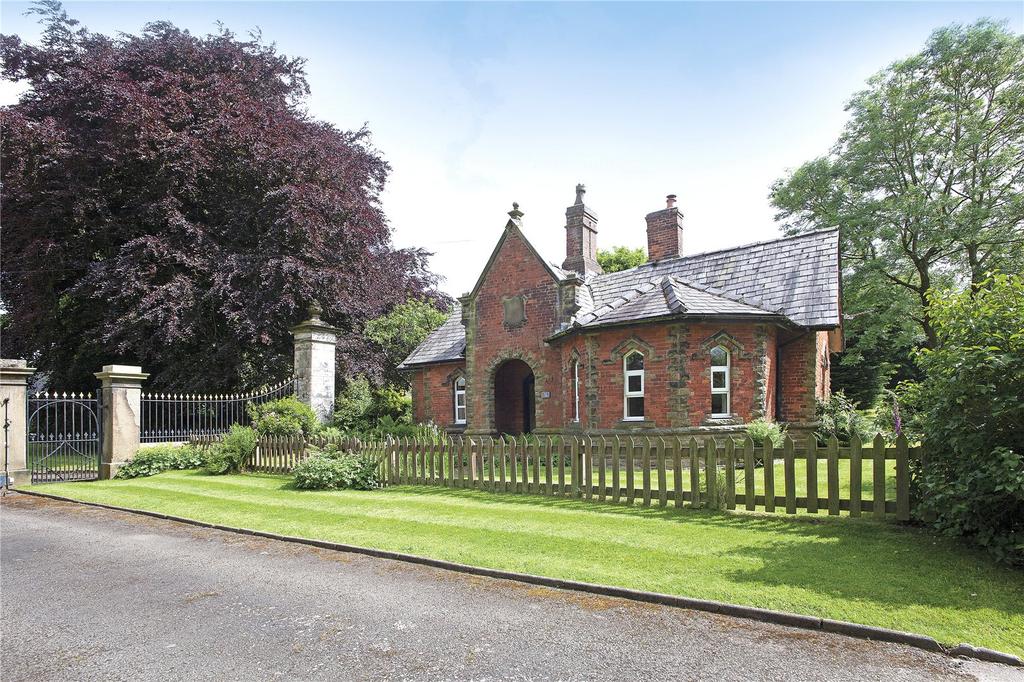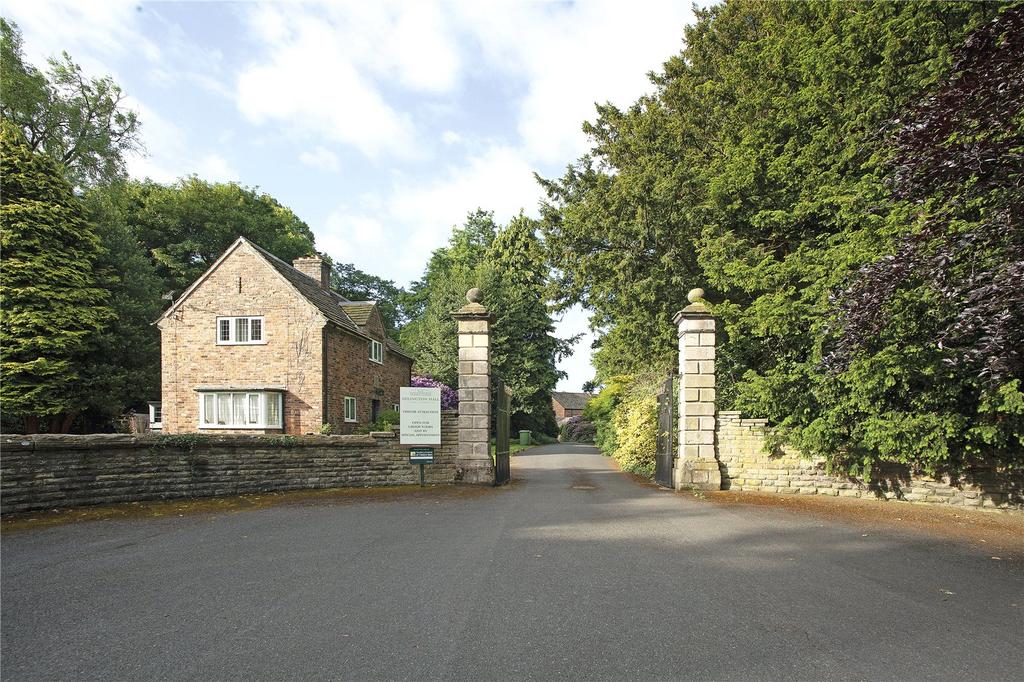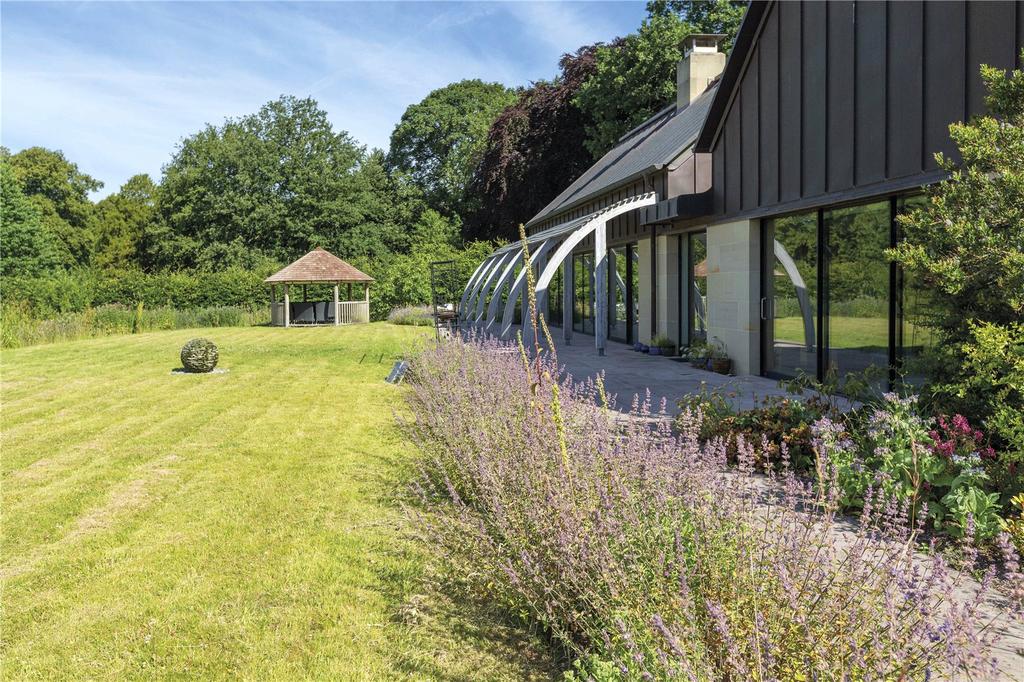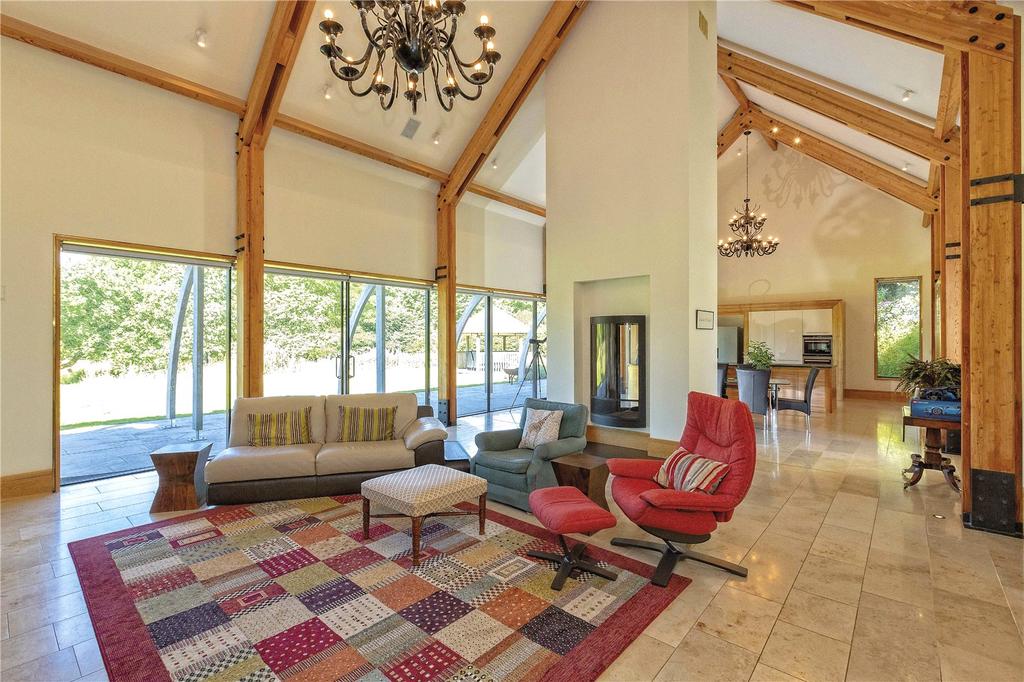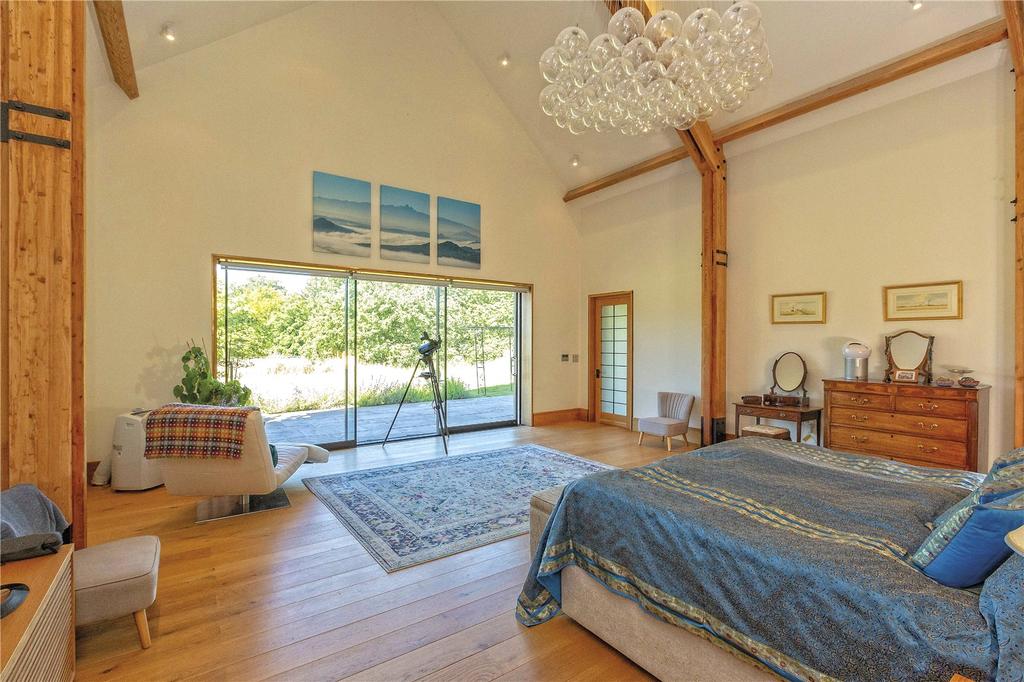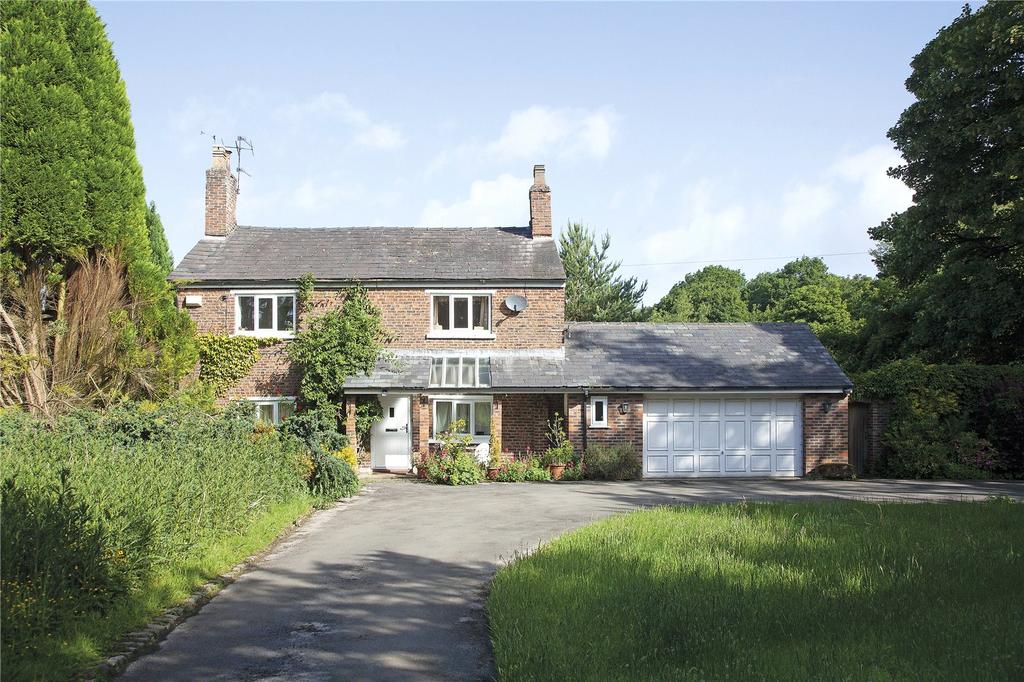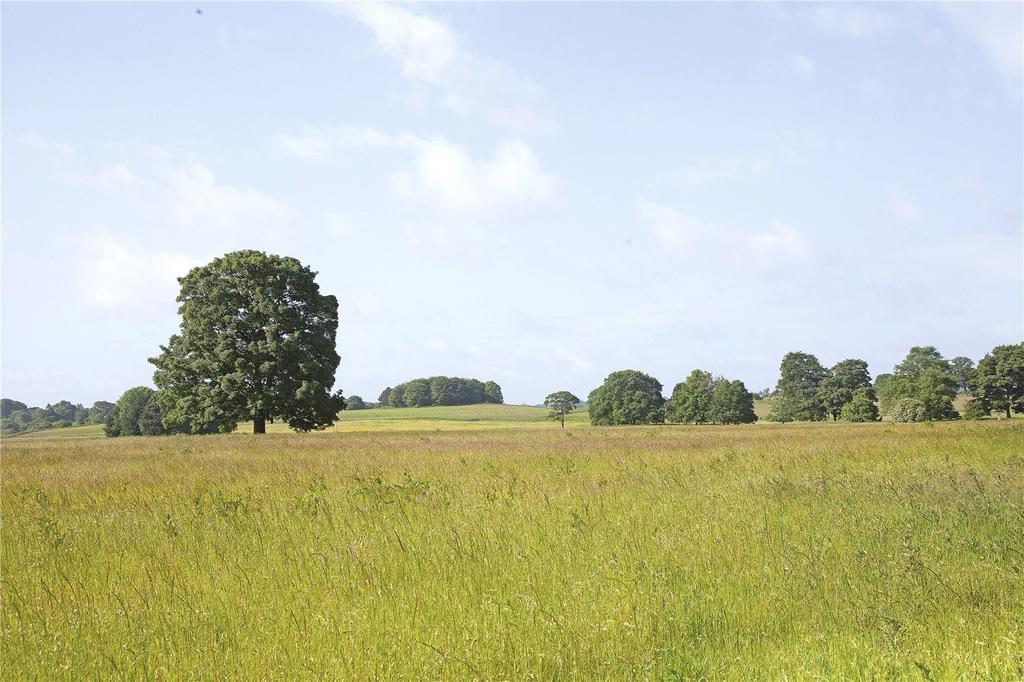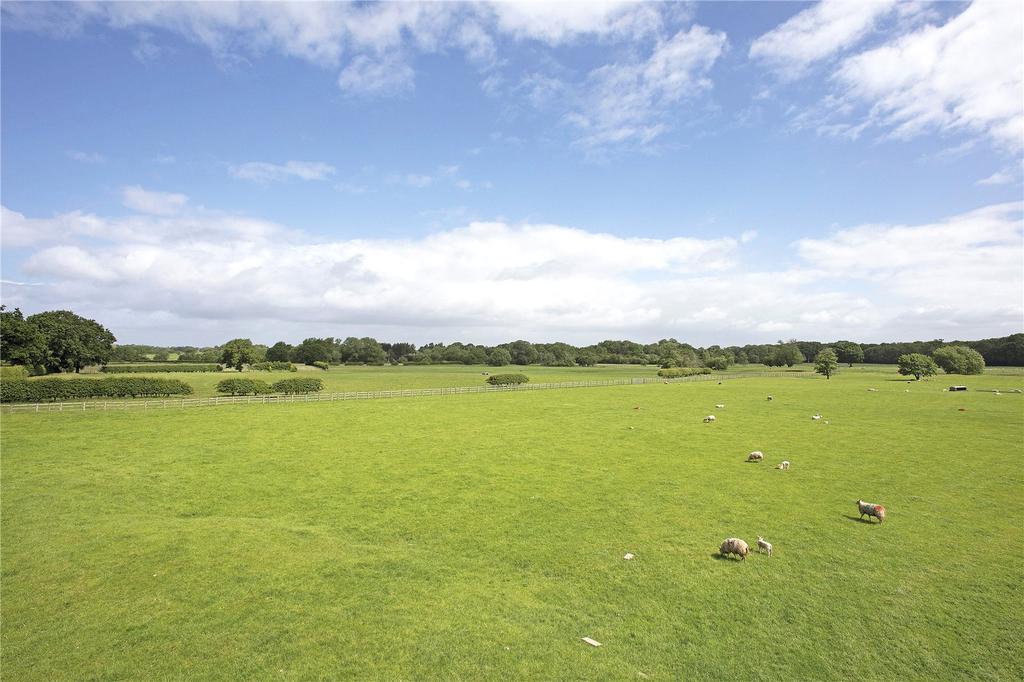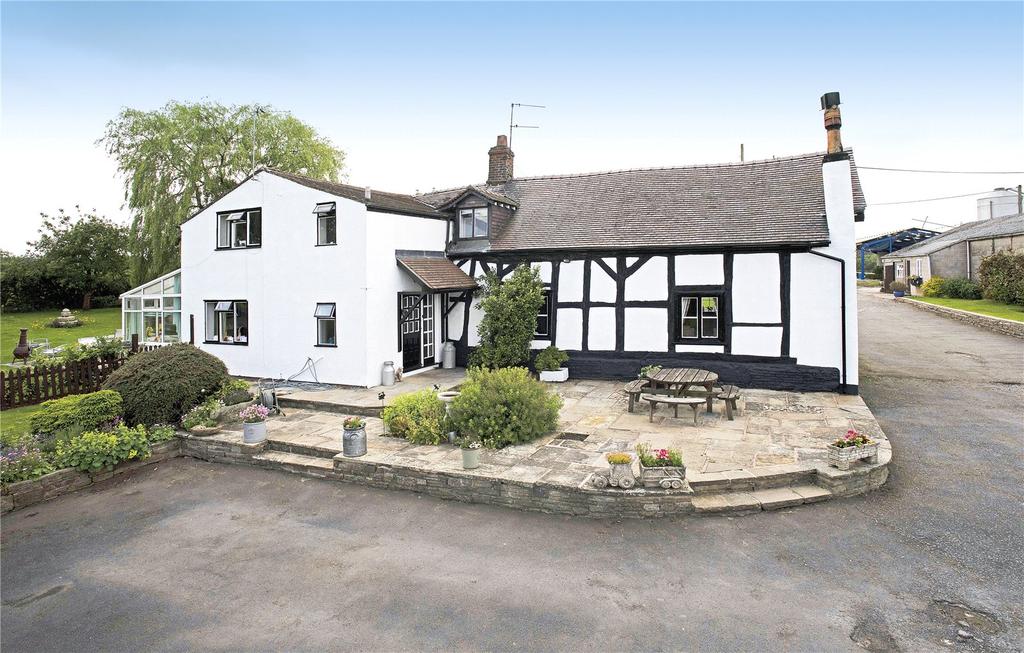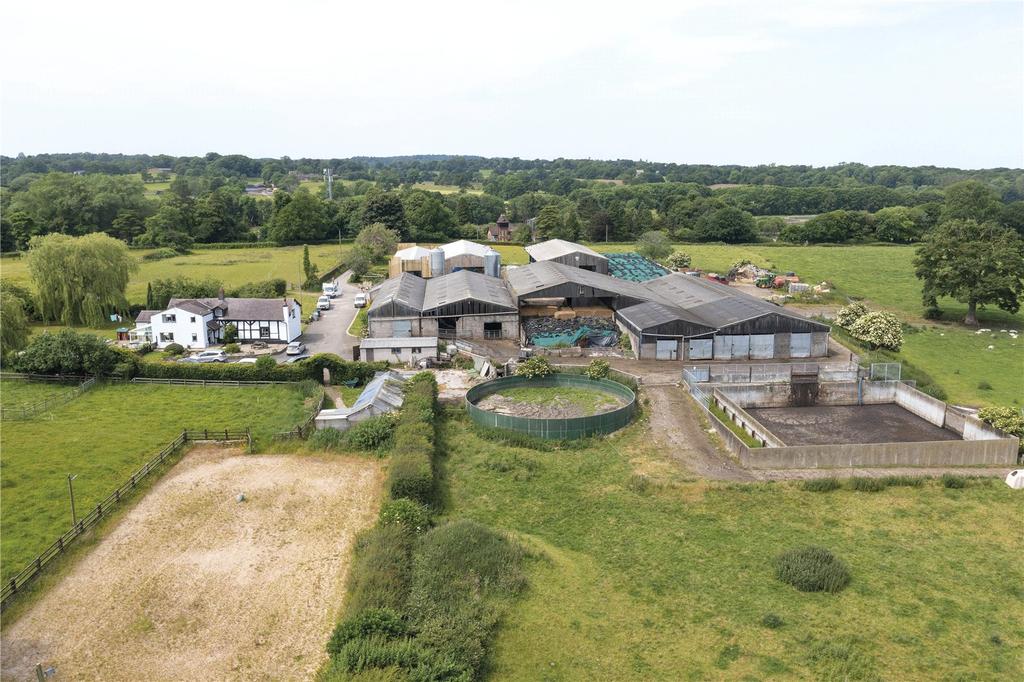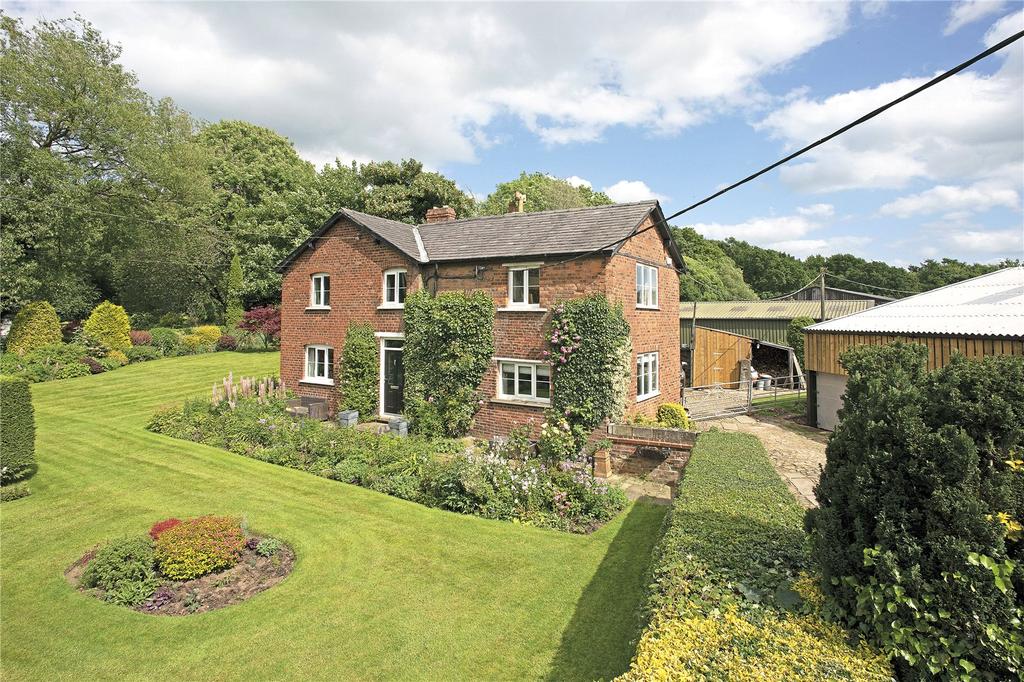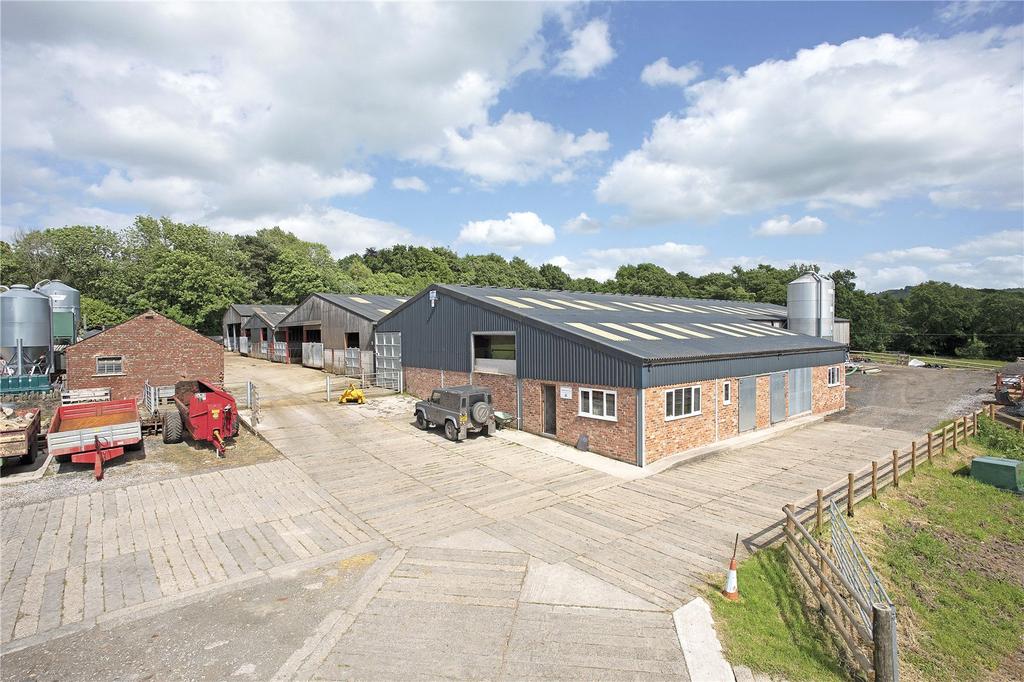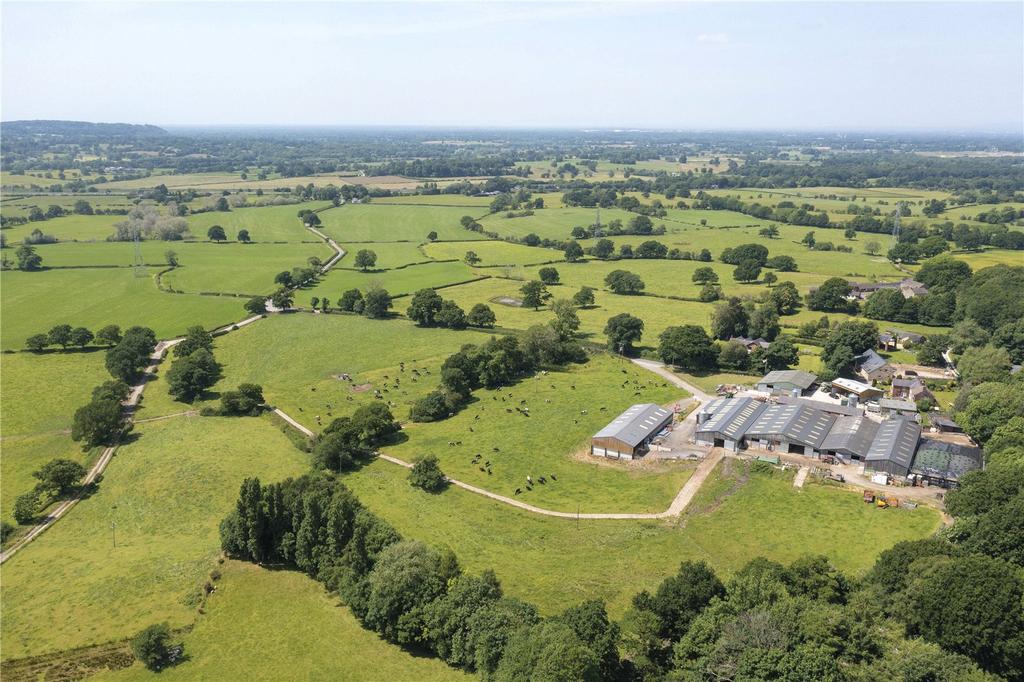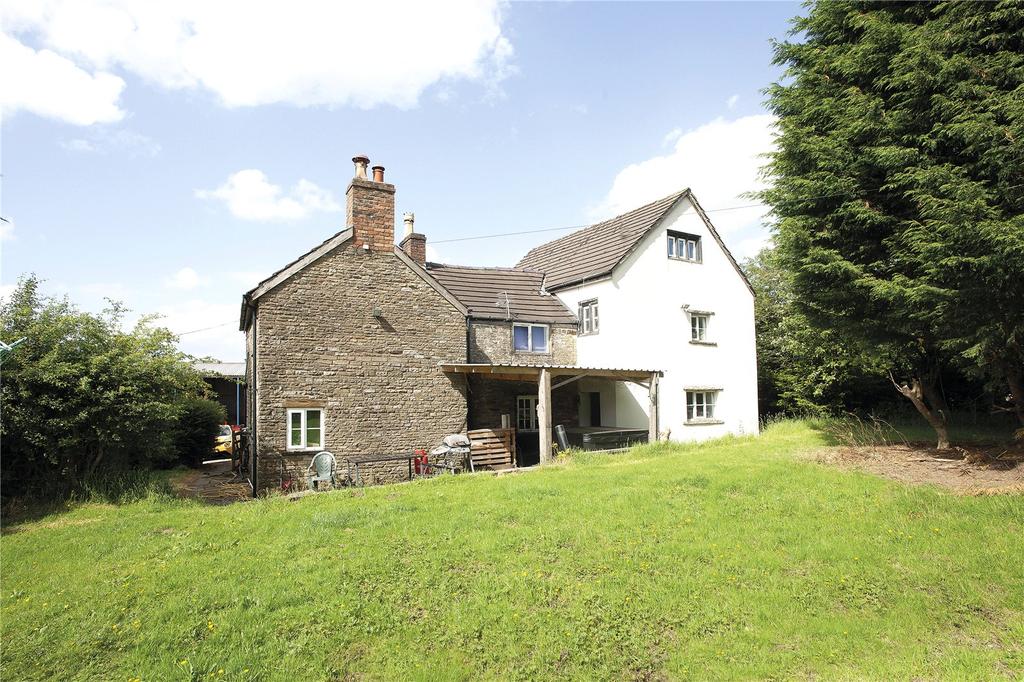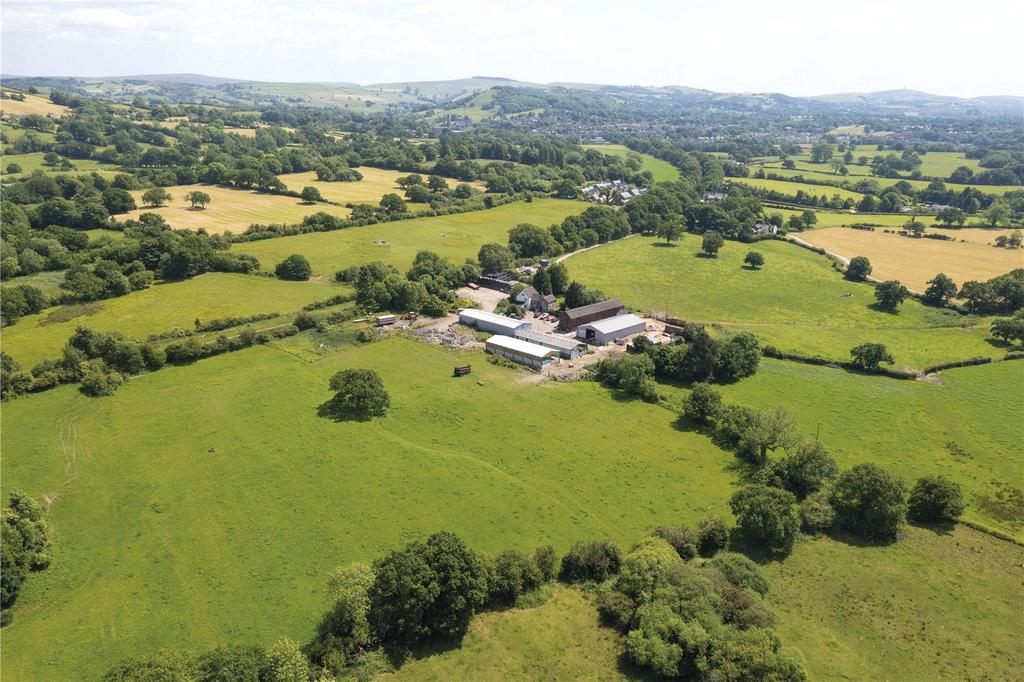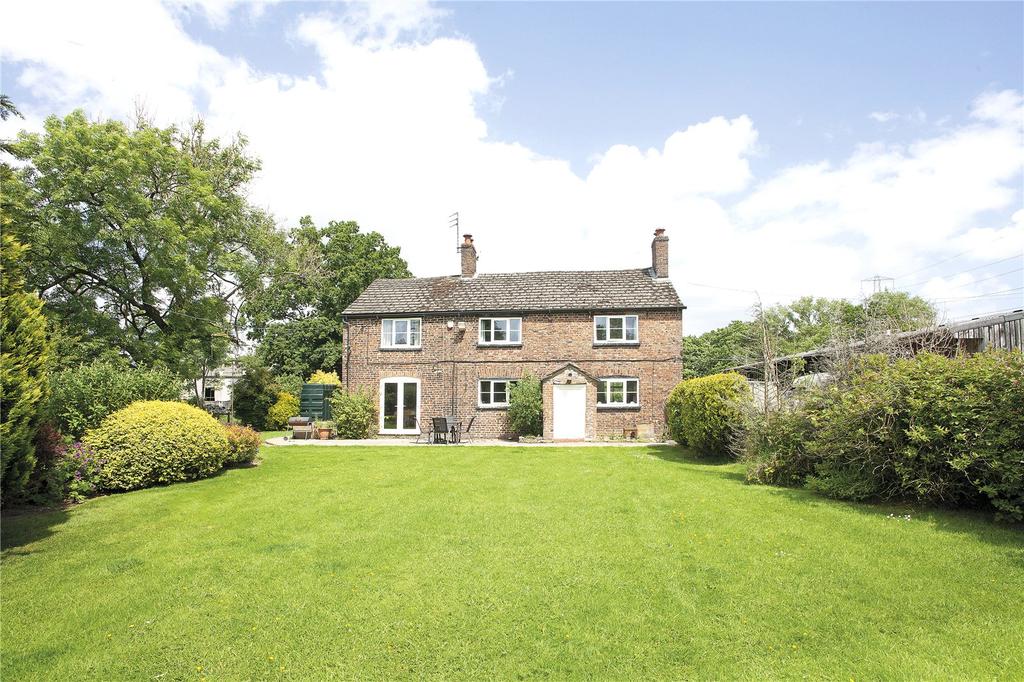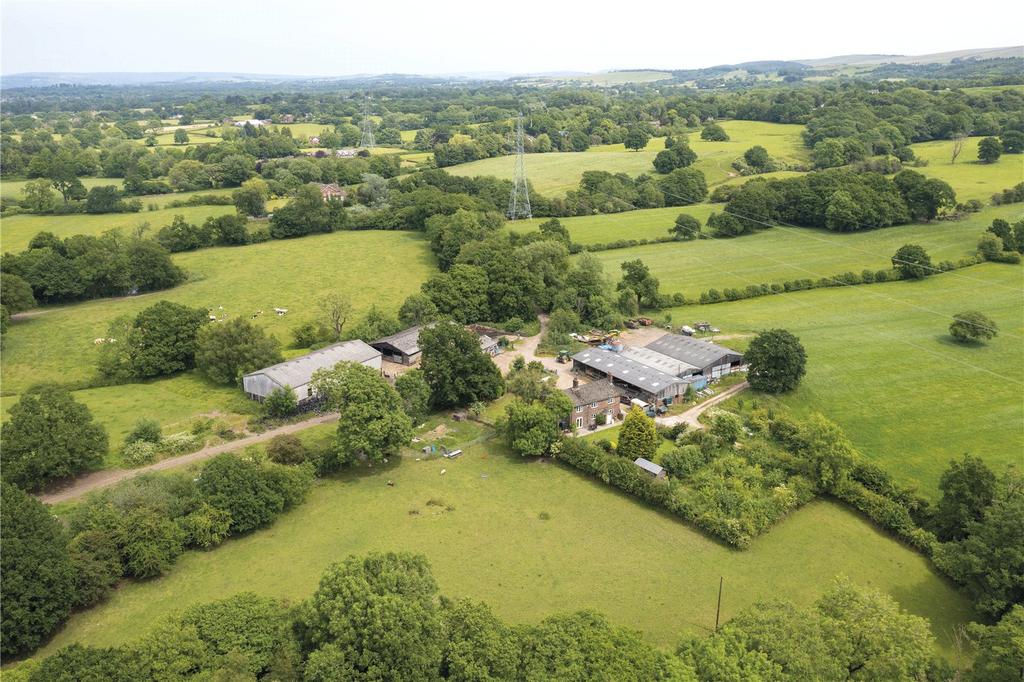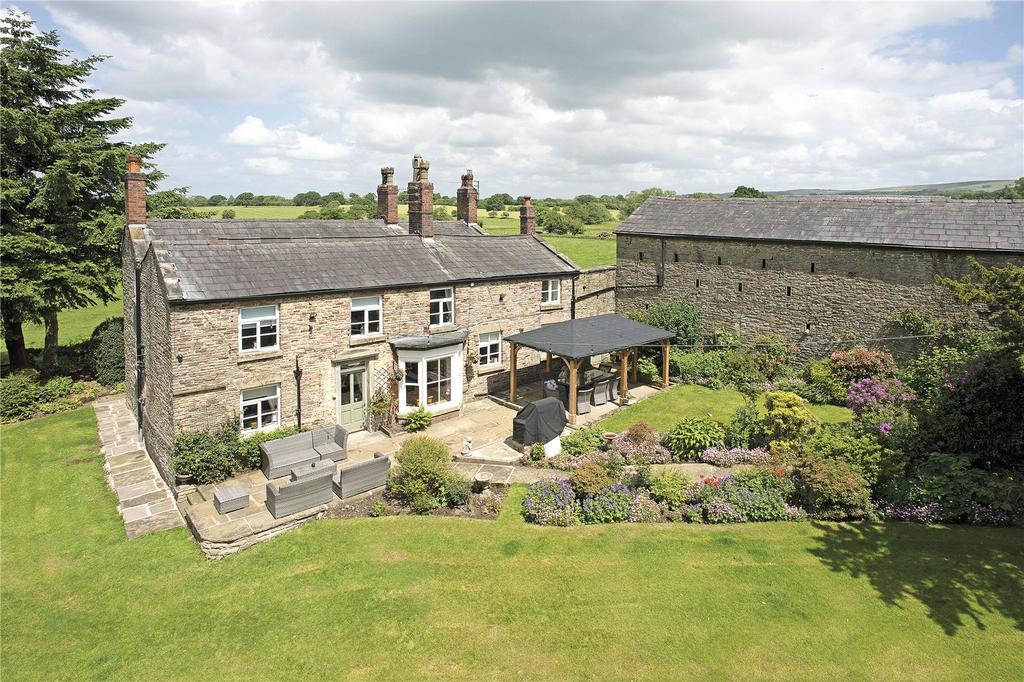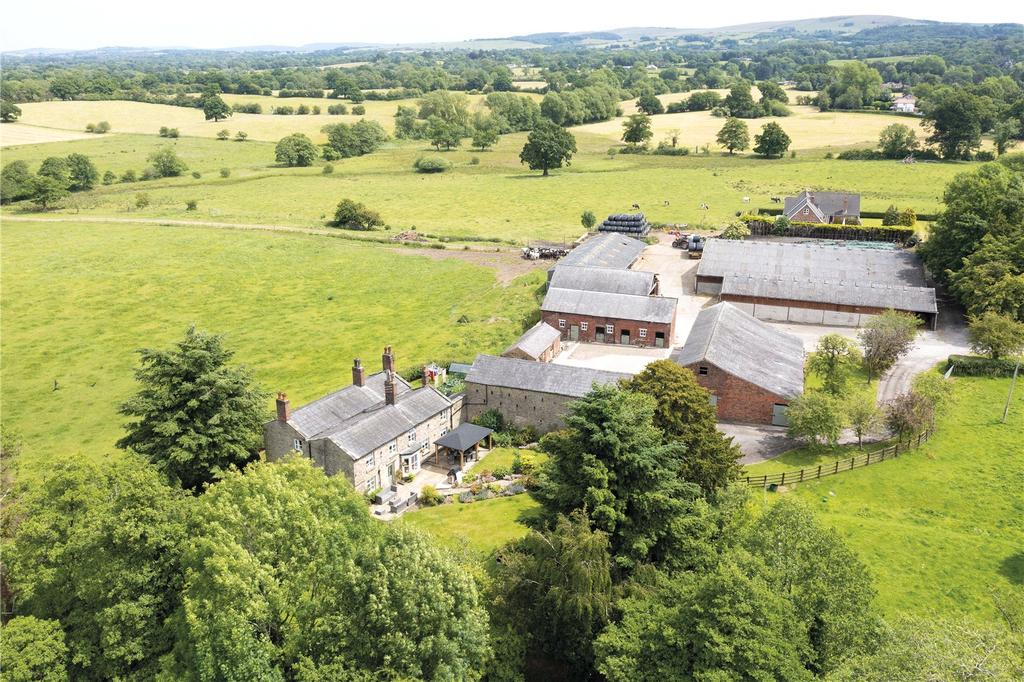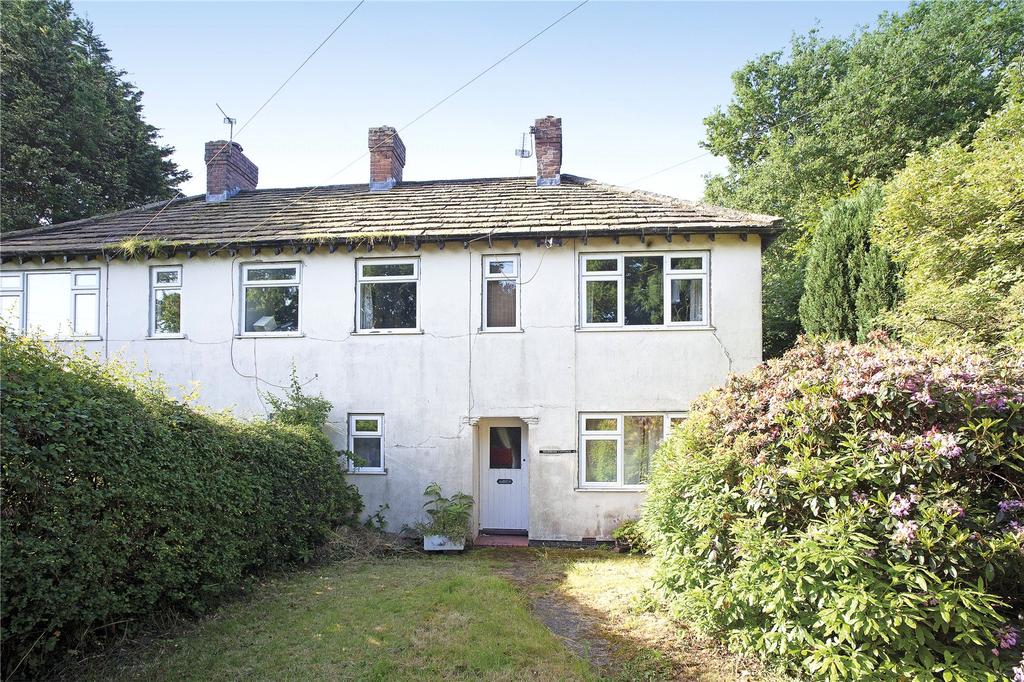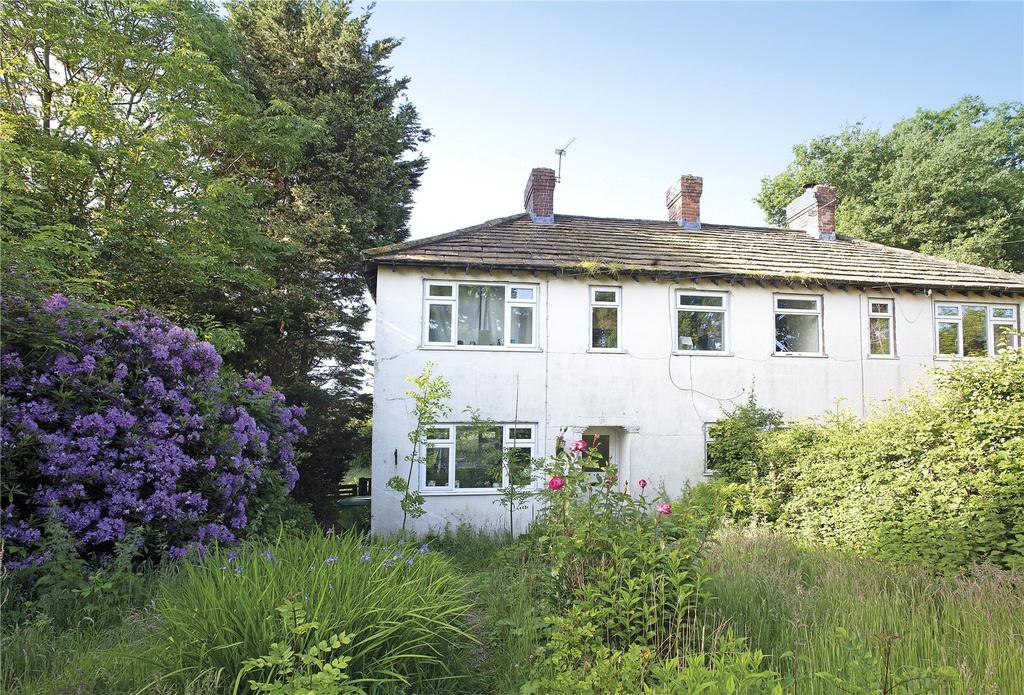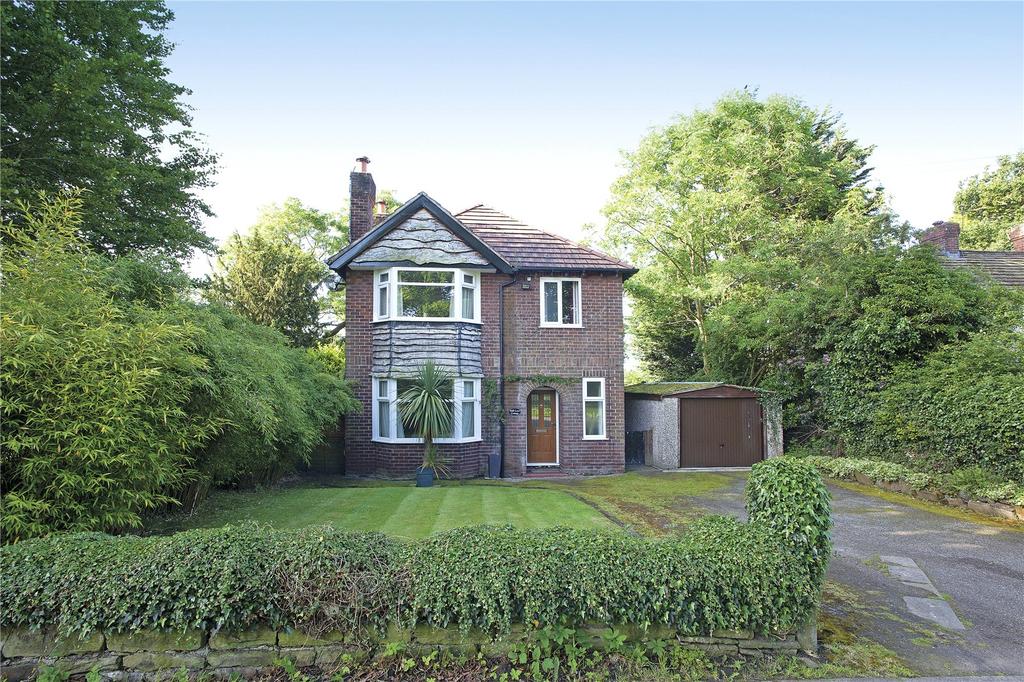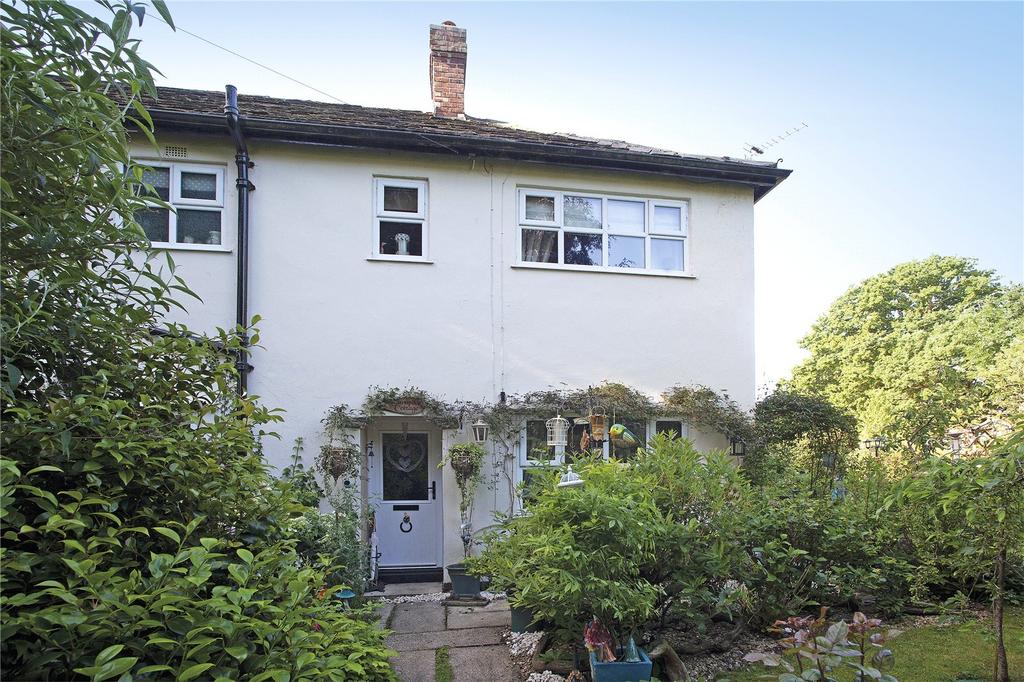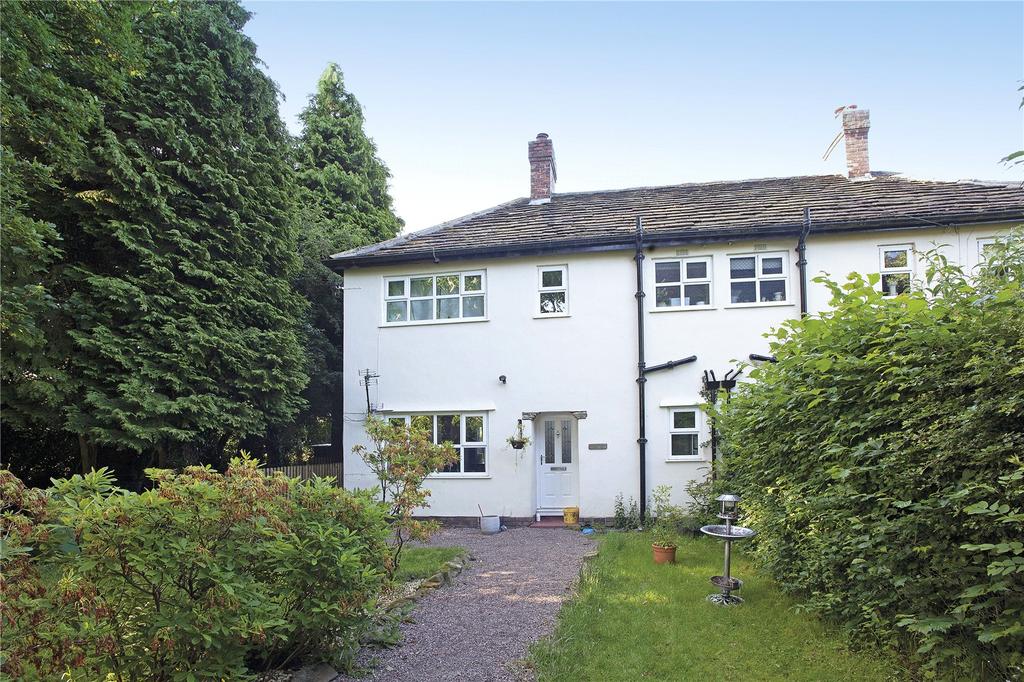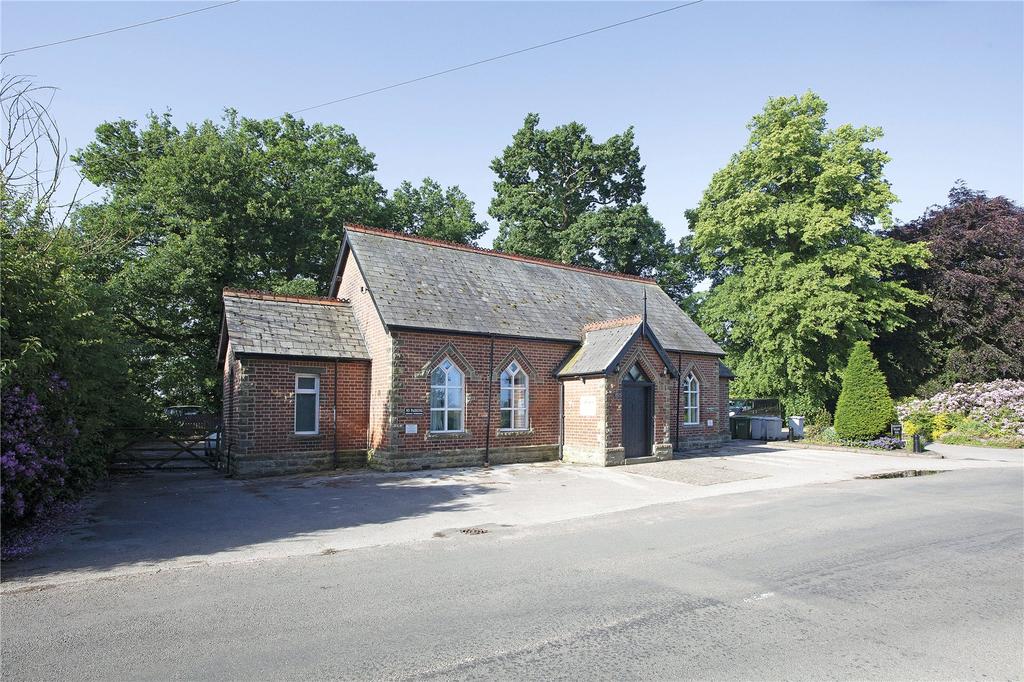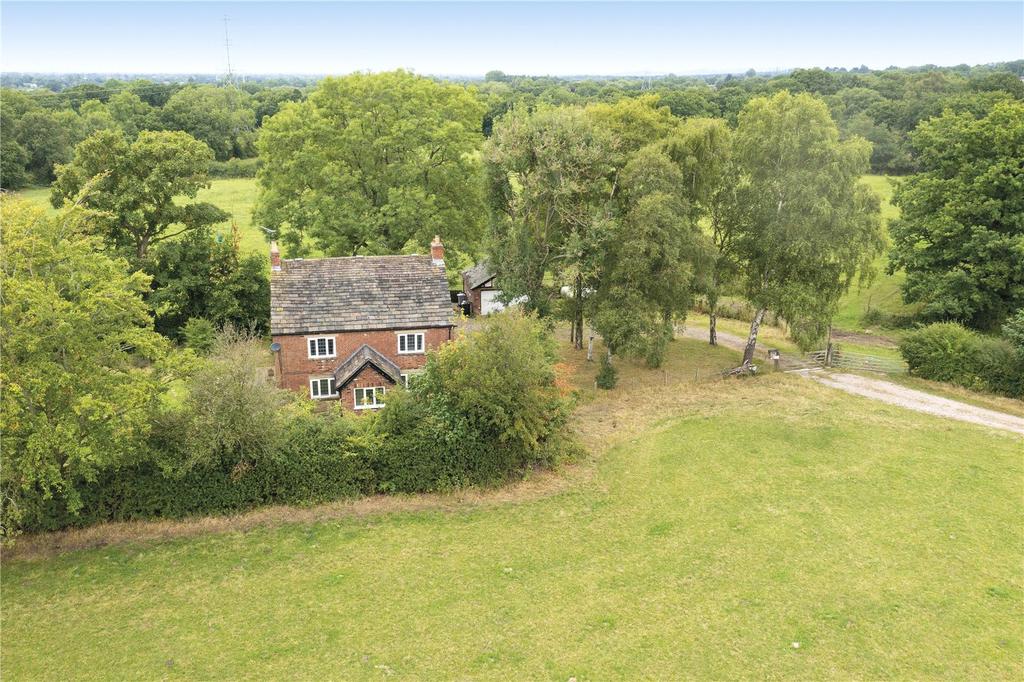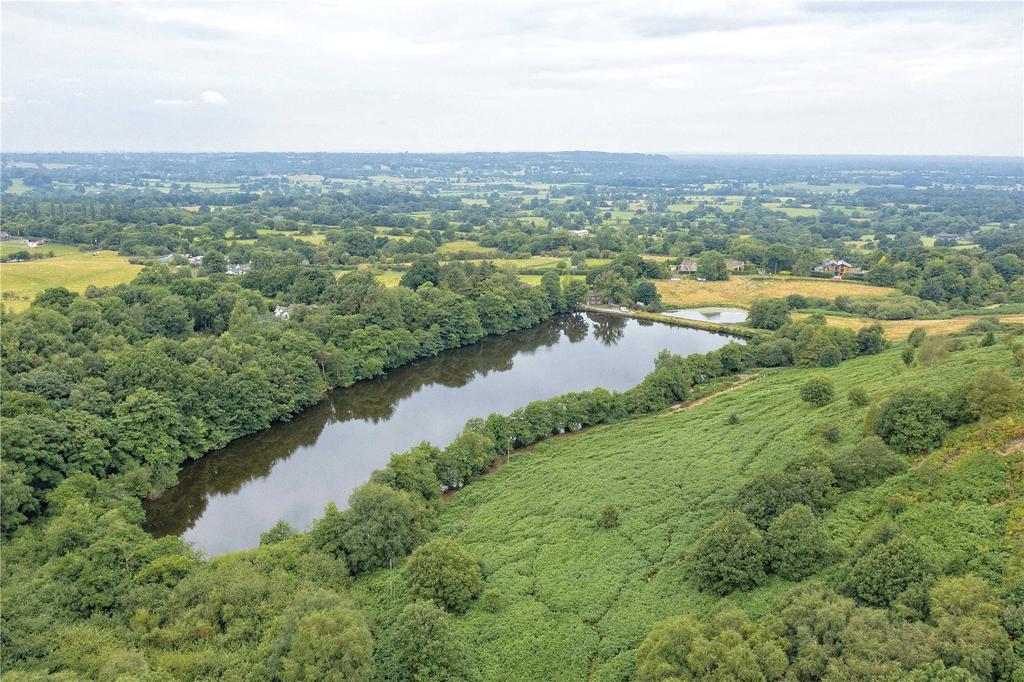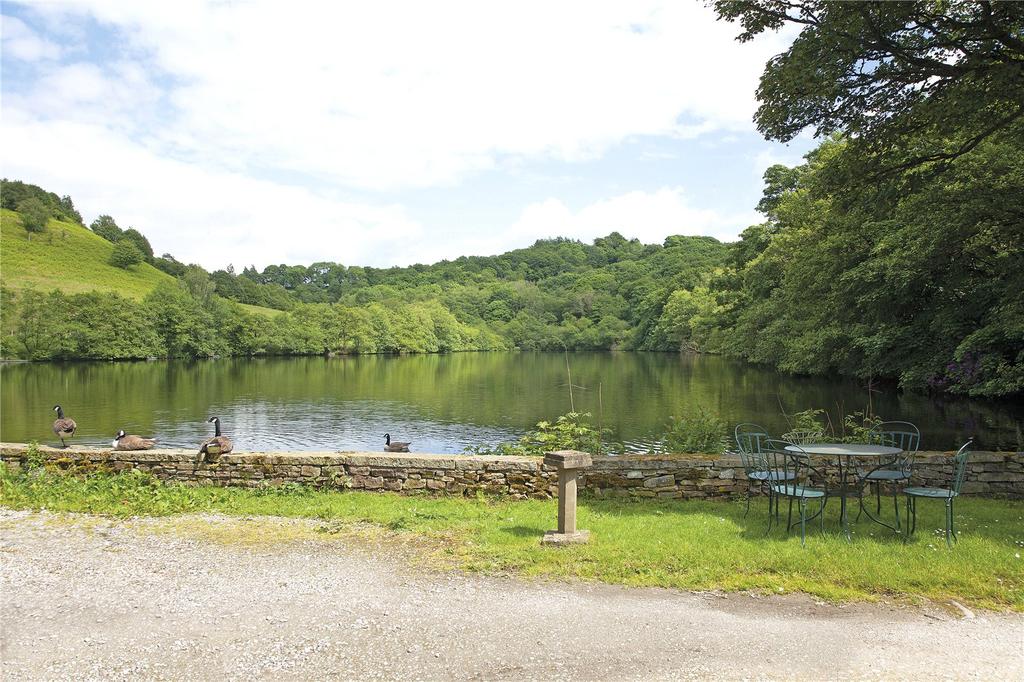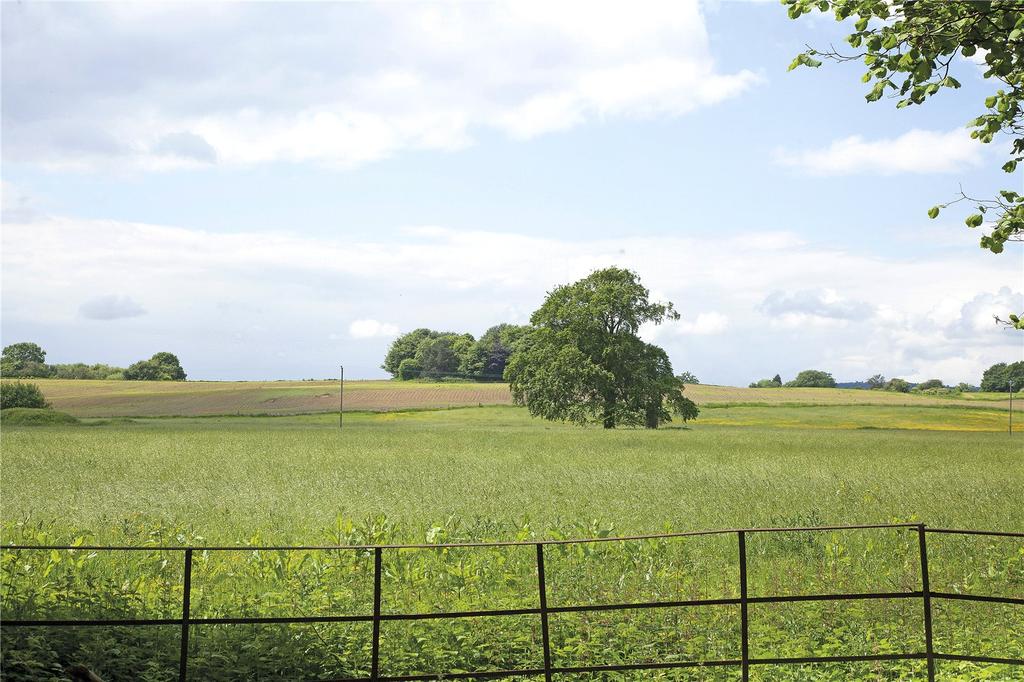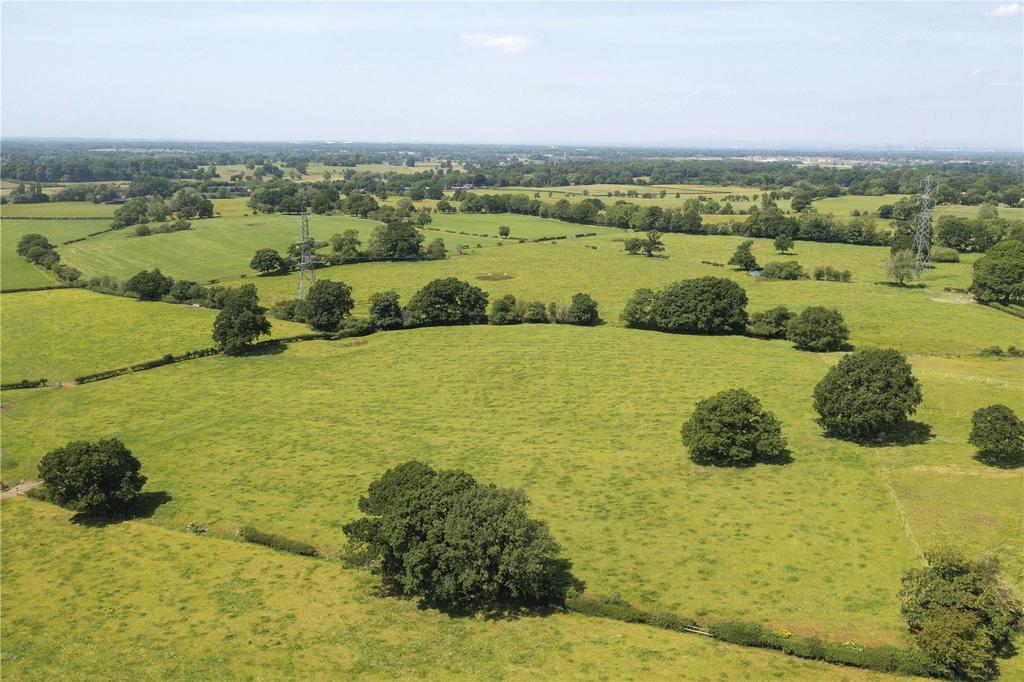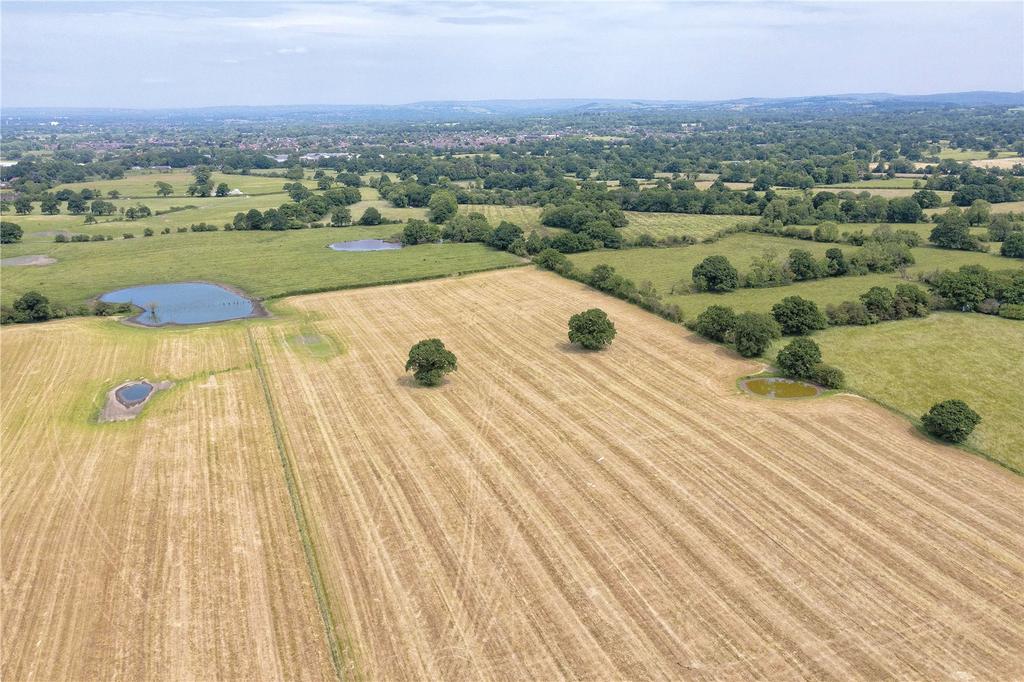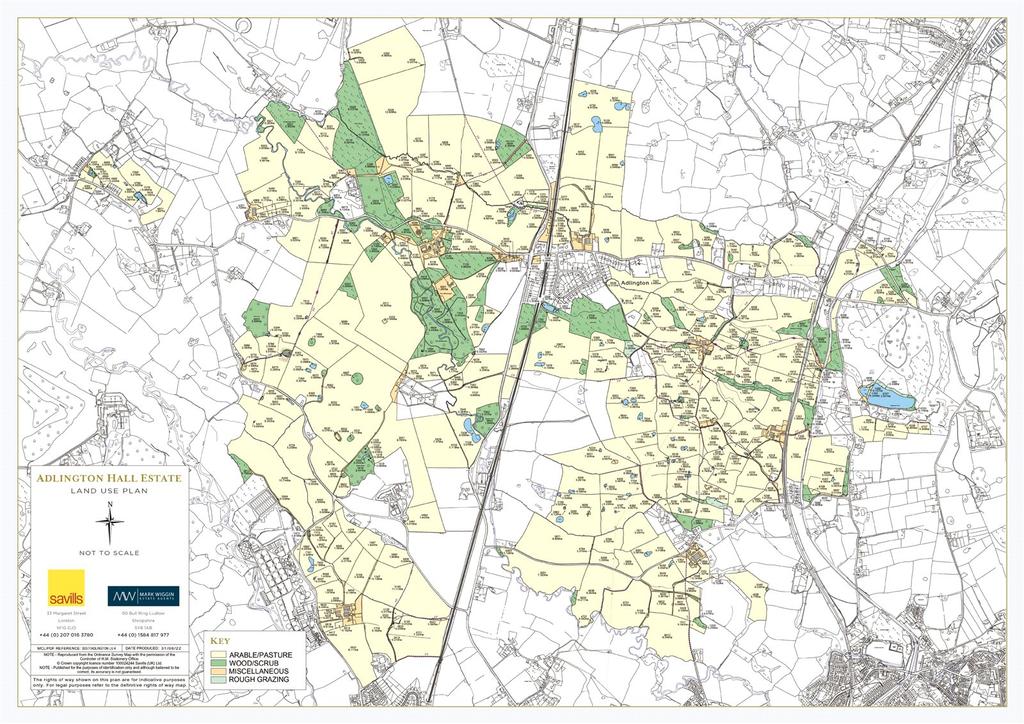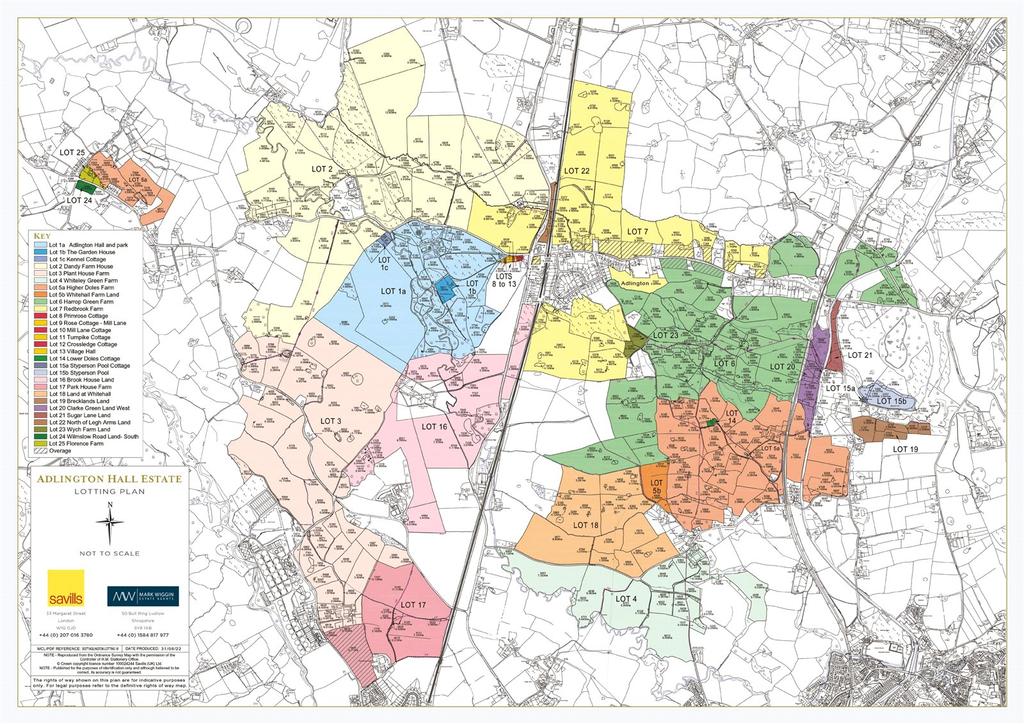10 bedroom detached house
Sold STC
Detached house
10 beds
6 baths
1,922.00 acre(s)
Key information
Tenure: Freehold
Service charge: £0 per annum
Council tax: Band TBC
Broadband: Super-fast 45Mbps *
Mobile signal:
EEO2ThreeVodafone
Features and description
- Tenure: Freehold
- Adlington Hall Park Gardens Wilderness
- Garden House 10 Period Mews Houses
- River Dean Approx. 4 Miles
- 6 Let Farms 10 Further Lodges and Cottages
- Many Longstanding Tenants and a Diverse Rent Roll
- Biodiversity Net Gain Units
- 1,623 Acres of Farmland
- 208 Acres of Woodland
- In all about 1,922 acres (777 hectares)
- For sale as a whole or in lots
A significant and historic country estate.
The Estate
The Adlington Hall Estate is a significant country estate with royal connections. At its heart is Adlington Hall – an impressive quadrangular house which can be traced back to Saxon times and has most recently been used as a private family home as well as holding weddings, events and public visits. The estate includes a number of farming and residential assets generating income. Having been the ancestral home of the Legh family for nearly 700 years - it is understood to now be on the market for the first time. The estate includes six farms, twenty two houses and cottages, Hunting Lodge events space, village hall and in all extends to 1,922 acres.
Adlington Hall
Adlington Hall, Grade I Listed, is a truly outstanding example of a house with a rich architectural history. It has a distinctive Tudor façade to the east and an impressive and imposing Georgian front to the south. The Hall is quadrangular in shape and records show it was once surrounded by a moat. The Great Hall on the north side was built by Thomas Legh between 1480 and 1505. More of the house was constructed in 1581 and was almost certainly half-timbered throughout in the black and white style synonymous with the Tudor period and Cheshire. The north front was rebuilt between 1665 and 1670. As a Royalist garrison, held for the Crown during the Civil War, the moat at Adlington was put to defensive use. At the end of the war, Colonel Thomas Legh the Younger recovered the property in 1656 and was appointed High Sheriff of Cheshire. After two sieges and years of neglect, restoration work was carried out in 1660 to the north front of the house. In 1739, Charles Legh inherited the estate and embarked on an ambitious programme of improvements to the house - transforming it from a medium sized Tudor house into a large Georgian manor house. He completed the west wing in 1749, rebuilt the west side of the quadrangle, demolished the buildings on the south side of the quadrangle and built the Georgian south front connecting the new west wing with the older east wing. The next large scale structural changes to Adlington Hall occurred in 1928 when much of the west wing side of the quadrangle was replaced. In more recent times, works to the roof and wiring have been done on major sections of Adlington Hall. The south side and Georgian part of the Hall is known as the private side and has been used as a private family home. The east side includes the estate office, kitchen and chapel and the northern section of the Hall includes the Great Hall and some of the oldest and most historically important rooms of the Hall, these are predominantly used for events and have been opened to the public one day a week at the owners choice. Two private drives lead to Adlington Hall – the shorter North drive bringing you to the Tudor side to the east where a cobbled courtyard lies in front of the Hall, with a longer drive bringing you through the park to the Georgian front at the south.
Gardens and Grounds
The gardens and grounds hold as much historic interest as the house and have a rich botanical and architectural story to tell. Once a medieval deer park, the landscaped park, pleasure ground and formal garden as you see today date back to the eighteenth century. Colonel Legh, who inherited Adlington in 1739 is credited with laying out a formal water garden north of the Hall and to the south the pleasure gardens known as The Wilderness. Most of the grounds are laid to lawn and pasture with the River Dean meandering through the park and pleasure ground. To the north of the Hall is a sunken lawn and scented Rose Garden, Laburnum Arcade, Bee-Bole wall and Yew Maze with a unicorn at its centre – the family emblem. To the west is historical parkland and the River Dean, along with a parcel of woodland. At the woodland edge are four timber stables, a tack room and feed room which are now used as garden stores.
From the front of the Hall, looking south your eyes are immediately drawn to the Wilderness gates which date back to 1688, these lead to the Dutch Lime Walk which was planted to commemorate the accession to the throne of Prince William of Orange and Queen Mary. The Wilderness is a wonderful example of a woodland garden with several follies, eye catchers and specimen trees. The Wilderness and its hidden structures have survived many hundreds of years under the Legh family’s careful management. The walks through the Wilderness are utterly charming throughout the seasons, from the spring months when swathes of Rhododendrons are in full bloom, to summer days when the sun beams break through and make dapple shade. There are a number of walks and paths through the Wilderness and the river meandering through makes for a calm and romantic place. The Wilderness is also particularly beautiful in the Autumn months.
Situation
The Adlington Hall Estate is situated some 5 miles to the East of Wilmslow, 7 miles to the North of Macclesfield and 16 miles and to the South of Manchester. This is one of the most popular and sought-after areas in the United Kingdom. The Estate is highly accessible with the M56 about 9 miles away and the M6 a further 19 mil.es The west coast mainline service can be found in Macclesfield, where the quickest trains take approximately 1 hour and 50 minutes to London Euston. Wilmslow station is 5 miles away. Manchester airport is only 8 miles. All the day to day facilities are available in nearby Prestbury and Wilmslow including excellent shops and schools. The City of Manchester, where there are an extensive range of facilities is also close by, approximately 16 miles away.
History
The origins of Adlington Hall can be traced back to Saxon times where Earl Edwin built a Hunting Lodge. Norman Earls held Adlington for seven generations until 1221 when it passed to the Crown. Henry III passed the manor to Hugh de Corona who daughter Lucy had one son, Thomas and two daughters - Ellen and Isabel. Ellen married John de Legh of Booth and during the reign of Edward II, Thomas, granted Adlington to Ellen and John for their life with the remainder to Robert, their second son. From thereon, Adlington became the ancestral home of the Legh family and has remained in their hands to the present day - over 700 years.
Farming
The farms on the estate are predominantly let on agricultural tenancy agreements to longstanding tenants. 1,229 acres are let on six separate agricultural tenancy agreements with with smaller paddocks on short term grazing licences - more details can be found in the brochure. There are 160 acres in hand which are predominantly around Adlington Hall. The agricultural land is split between arable and pasture with cropping typically cereals and permeable, seasonally wet, slightly acidic but base-rich loamy and clayey soils, SoilScape15 being naturally wet, very acid, sandy and loamy soil and SoilScape 6 being freely draining, slightly acid loamy soils. The farms include principle farmhouses along with both traditional and modern farm buildings.
Residential Properties
In total there are twenty eight residential properties, with twenty two lying outside farm tenancies. These range from Mews houses to semi-detached cottages to Adlington Hall. The portfolio of residential property is spread across the estate; within the vicinity of the main house, forming part of farmsteads and within the village of Adlington. The properties are let on a range of occupancies, principally Assured Shorthold Tenancies (ASTs), of which all provide an interesting and diverse investment portfolio with opportunities for future uplift in value. The twenty eight houses and cottages are made up as follows:- 16 - Assured Shorthold Tenancy. 6 - Farmhouse within Farming Tenancies. 6 - Vacant Possession.
Woodland
There are 211 acres of broadleaf woodland located across the whole estate as small wooded copses, in-field trees and mature parkland. The owners do not run a shoot.
General Remarks and Stipulations
Method of Sale: The property is offered for sale by private treaty as a whole or in lots.
Lotting: Purchasers should be aware that priority is likely to be given to interest in the whole and the main lots before any viewings of the smaller residential properties. In the event of a sale in lots, cross rights and reservations may be imposed and granted for the provision of access, maintenance and services.
Tenure and Occupation: Vacant possession will be given upon completion subject to the occupancies listed in the table to the right.
Grant Schemes: Further details available from the agents.
Local Authority: Cheshire East Council -
Mineral, Sporting and Timber Rights: The minerals, sporting and timber rights, so far as they are owned are included in the sale.
Holdover: Subject to the date of completion, holdover may be required on Adlington Hall. Further details from the selling agents.
Fixtures and Fittings: The purchaser should assume that all of the fixtures and fittings, light fittings, electrical appliances and garden statutory are specifically excluded from the sale. The purchaser should also be aware that let property may benefit from tenants improvements and fixtures. Clarification on any specific items should be sought from the vendors’ agents. Some items may be available by separate negotiation.
Tree Preservation Orders: There a number of Tree Preservation Orders (TPOs) across the estate, please contact the agents for more information
Services: Mains water, electricity and gas. Private drainage.
Council Tax: Band E
Wayleaves, easements and rights of way: The property will be sold subject to and with the benefits of all wayleaves, easements and rights of way, whether mentioned in these sales particulars or not.
Viewings: Strictly by appointment via Mark Wiggin Estate Agents.
The Estate
The Adlington Hall Estate is a significant country estate with royal connections. At its heart is Adlington Hall – an impressive quadrangular house which can be traced back to Saxon times and has most recently been used as a private family home as well as holding weddings, events and public visits. The estate includes a number of farming and residential assets generating income. Having been the ancestral home of the Legh family for nearly 700 years - it is understood to now be on the market for the first time. The estate includes six farms, twenty two houses and cottages, Hunting Lodge events space, village hall and in all extends to 1,922 acres.
Adlington Hall
Adlington Hall, Grade I Listed, is a truly outstanding example of a house with a rich architectural history. It has a distinctive Tudor façade to the east and an impressive and imposing Georgian front to the south. The Hall is quadrangular in shape and records show it was once surrounded by a moat. The Great Hall on the north side was built by Thomas Legh between 1480 and 1505. More of the house was constructed in 1581 and was almost certainly half-timbered throughout in the black and white style synonymous with the Tudor period and Cheshire. The north front was rebuilt between 1665 and 1670. As a Royalist garrison, held for the Crown during the Civil War, the moat at Adlington was put to defensive use. At the end of the war, Colonel Thomas Legh the Younger recovered the property in 1656 and was appointed High Sheriff of Cheshire. After two sieges and years of neglect, restoration work was carried out in 1660 to the north front of the house. In 1739, Charles Legh inherited the estate and embarked on an ambitious programme of improvements to the house - transforming it from a medium sized Tudor house into a large Georgian manor house. He completed the west wing in 1749, rebuilt the west side of the quadrangle, demolished the buildings on the south side of the quadrangle and built the Georgian south front connecting the new west wing with the older east wing. The next large scale structural changes to Adlington Hall occurred in 1928 when much of the west wing side of the quadrangle was replaced. In more recent times, works to the roof and wiring have been done on major sections of Adlington Hall. The south side and Georgian part of the Hall is known as the private side and has been used as a private family home. The east side includes the estate office, kitchen and chapel and the northern section of the Hall includes the Great Hall and some of the oldest and most historically important rooms of the Hall, these are predominantly used for events and have been opened to the public one day a week at the owners choice. Two private drives lead to Adlington Hall – the shorter North drive bringing you to the Tudor side to the east where a cobbled courtyard lies in front of the Hall, with a longer drive bringing you through the park to the Georgian front at the south.
Gardens and Grounds
The gardens and grounds hold as much historic interest as the house and have a rich botanical and architectural story to tell. Once a medieval deer park, the landscaped park, pleasure ground and formal garden as you see today date back to the eighteenth century. Colonel Legh, who inherited Adlington in 1739 is credited with laying out a formal water garden north of the Hall and to the south the pleasure gardens known as The Wilderness. Most of the grounds are laid to lawn and pasture with the River Dean meandering through the park and pleasure ground. To the north of the Hall is a sunken lawn and scented Rose Garden, Laburnum Arcade, Bee-Bole wall and Yew Maze with a unicorn at its centre – the family emblem. To the west is historical parkland and the River Dean, along with a parcel of woodland. At the woodland edge are four timber stables, a tack room and feed room which are now used as garden stores.
From the front of the Hall, looking south your eyes are immediately drawn to the Wilderness gates which date back to 1688, these lead to the Dutch Lime Walk which was planted to commemorate the accession to the throne of Prince William of Orange and Queen Mary. The Wilderness is a wonderful example of a woodland garden with several follies, eye catchers and specimen trees. The Wilderness and its hidden structures have survived many hundreds of years under the Legh family’s careful management. The walks through the Wilderness are utterly charming throughout the seasons, from the spring months when swathes of Rhododendrons are in full bloom, to summer days when the sun beams break through and make dapple shade. There are a number of walks and paths through the Wilderness and the river meandering through makes for a calm and romantic place. The Wilderness is also particularly beautiful in the Autumn months.
Situation
The Adlington Hall Estate is situated some 5 miles to the East of Wilmslow, 7 miles to the North of Macclesfield and 16 miles and to the South of Manchester. This is one of the most popular and sought-after areas in the United Kingdom. The Estate is highly accessible with the M56 about 9 miles away and the M6 a further 19 mil.es The west coast mainline service can be found in Macclesfield, where the quickest trains take approximately 1 hour and 50 minutes to London Euston. Wilmslow station is 5 miles away. Manchester airport is only 8 miles. All the day to day facilities are available in nearby Prestbury and Wilmslow including excellent shops and schools. The City of Manchester, where there are an extensive range of facilities is also close by, approximately 16 miles away.
History
The origins of Adlington Hall can be traced back to Saxon times where Earl Edwin built a Hunting Lodge. Norman Earls held Adlington for seven generations until 1221 when it passed to the Crown. Henry III passed the manor to Hugh de Corona who daughter Lucy had one son, Thomas and two daughters - Ellen and Isabel. Ellen married John de Legh of Booth and during the reign of Edward II, Thomas, granted Adlington to Ellen and John for their life with the remainder to Robert, their second son. From thereon, Adlington became the ancestral home of the Legh family and has remained in their hands to the present day - over 700 years.
Farming
The farms on the estate are predominantly let on agricultural tenancy agreements to longstanding tenants. 1,229 acres are let on six separate agricultural tenancy agreements with with smaller paddocks on short term grazing licences - more details can be found in the brochure. There are 160 acres in hand which are predominantly around Adlington Hall. The agricultural land is split between arable and pasture with cropping typically cereals and permeable, seasonally wet, slightly acidic but base-rich loamy and clayey soils, SoilScape15 being naturally wet, very acid, sandy and loamy soil and SoilScape 6 being freely draining, slightly acid loamy soils. The farms include principle farmhouses along with both traditional and modern farm buildings.
Residential Properties
In total there are twenty eight residential properties, with twenty two lying outside farm tenancies. These range from Mews houses to semi-detached cottages to Adlington Hall. The portfolio of residential property is spread across the estate; within the vicinity of the main house, forming part of farmsteads and within the village of Adlington. The properties are let on a range of occupancies, principally Assured Shorthold Tenancies (ASTs), of which all provide an interesting and diverse investment portfolio with opportunities for future uplift in value. The twenty eight houses and cottages are made up as follows:- 16 - Assured Shorthold Tenancy. 6 - Farmhouse within Farming Tenancies. 6 - Vacant Possession.
Woodland
There are 211 acres of broadleaf woodland located across the whole estate as small wooded copses, in-field trees and mature parkland. The owners do not run a shoot.
General Remarks and Stipulations
Method of Sale: The property is offered for sale by private treaty as a whole or in lots.
Lotting: Purchasers should be aware that priority is likely to be given to interest in the whole and the main lots before any viewings of the smaller residential properties. In the event of a sale in lots, cross rights and reservations may be imposed and granted for the provision of access, maintenance and services.
Tenure and Occupation: Vacant possession will be given upon completion subject to the occupancies listed in the table to the right.
Grant Schemes: Further details available from the agents.
Local Authority: Cheshire East Council -
Mineral, Sporting and Timber Rights: The minerals, sporting and timber rights, so far as they are owned are included in the sale.
Holdover: Subject to the date of completion, holdover may be required on Adlington Hall. Further details from the selling agents.
Fixtures and Fittings: The purchaser should assume that all of the fixtures and fittings, light fittings, electrical appliances and garden statutory are specifically excluded from the sale. The purchaser should also be aware that let property may benefit from tenants improvements and fixtures. Clarification on any specific items should be sought from the vendors’ agents. Some items may be available by separate negotiation.
Tree Preservation Orders: There a number of Tree Preservation Orders (TPOs) across the estate, please contact the agents for more information
Services: Mains water, electricity and gas. Private drainage.
Council Tax: Band E
Wayleaves, easements and rights of way: The property will be sold subject to and with the benefits of all wayleaves, easements and rights of way, whether mentioned in these sales particulars or not.
Viewings: Strictly by appointment via Mark Wiggin Estate Agents.
Property information from this agent
About this agent

Based in Ludlow we cover Shropshire, Herefordshire, Worcestershire and Wales. With unrivalled knowledge and experience, Mark Wiggin Estate Agents offers a personal and dedicated service to clients.

